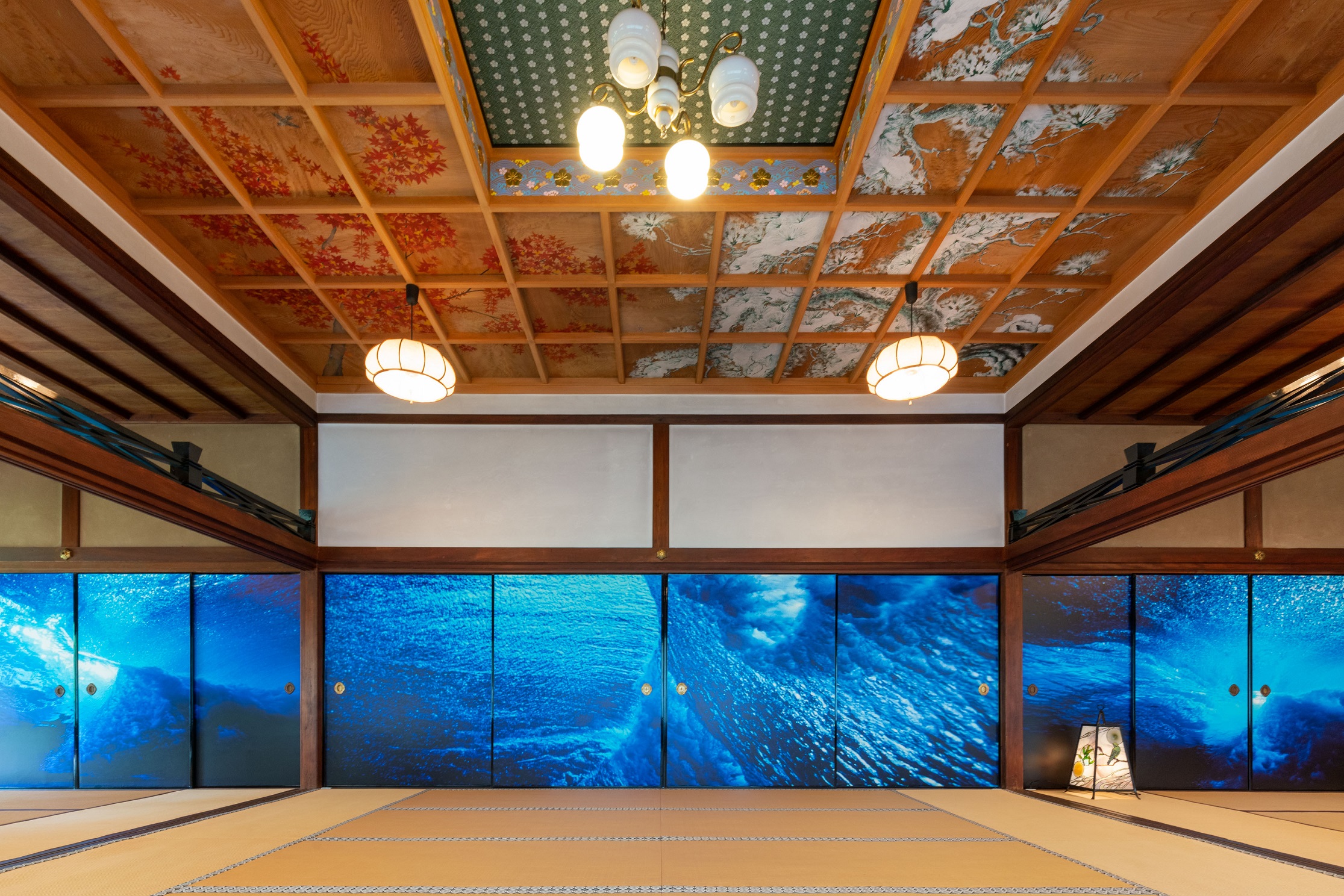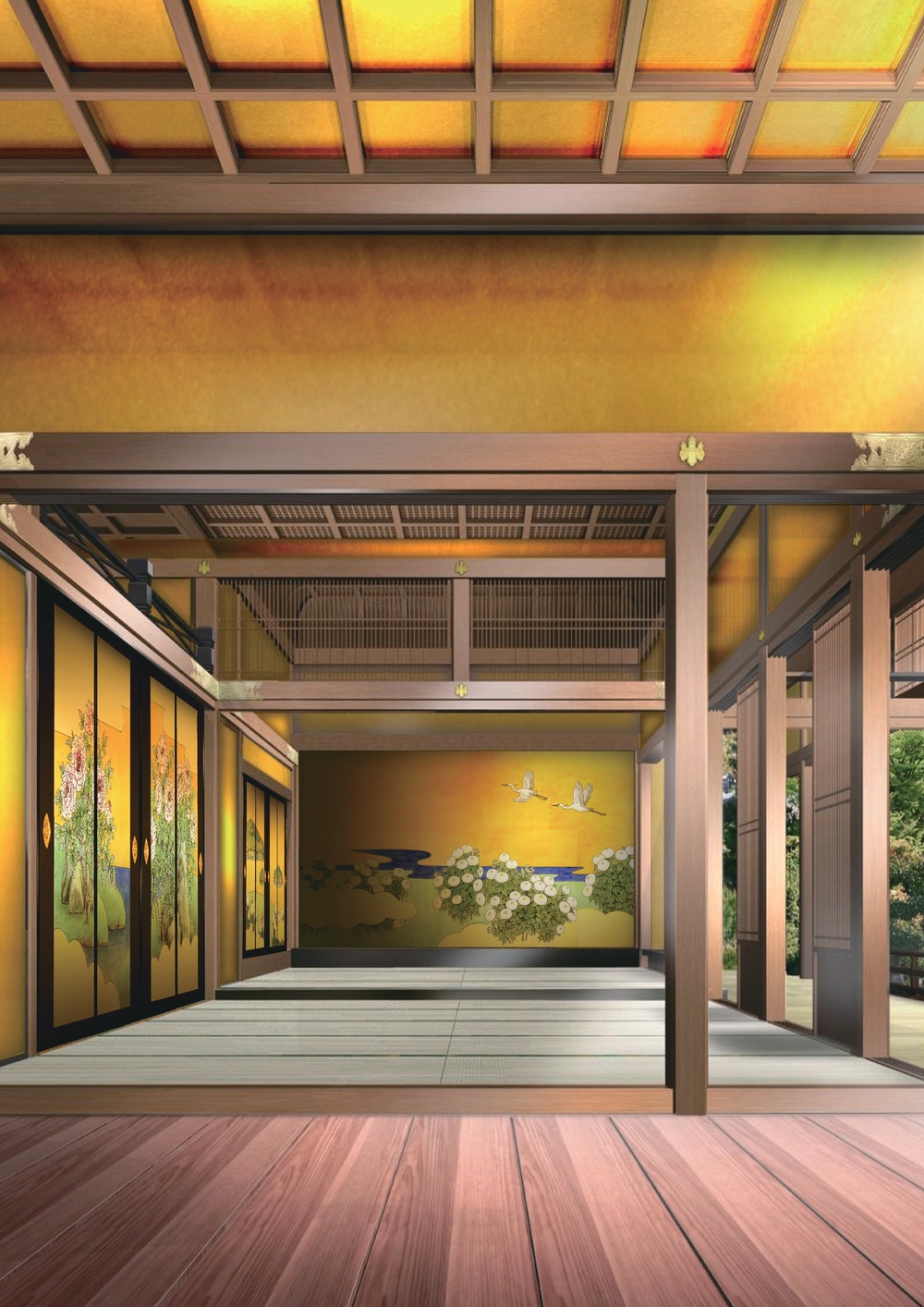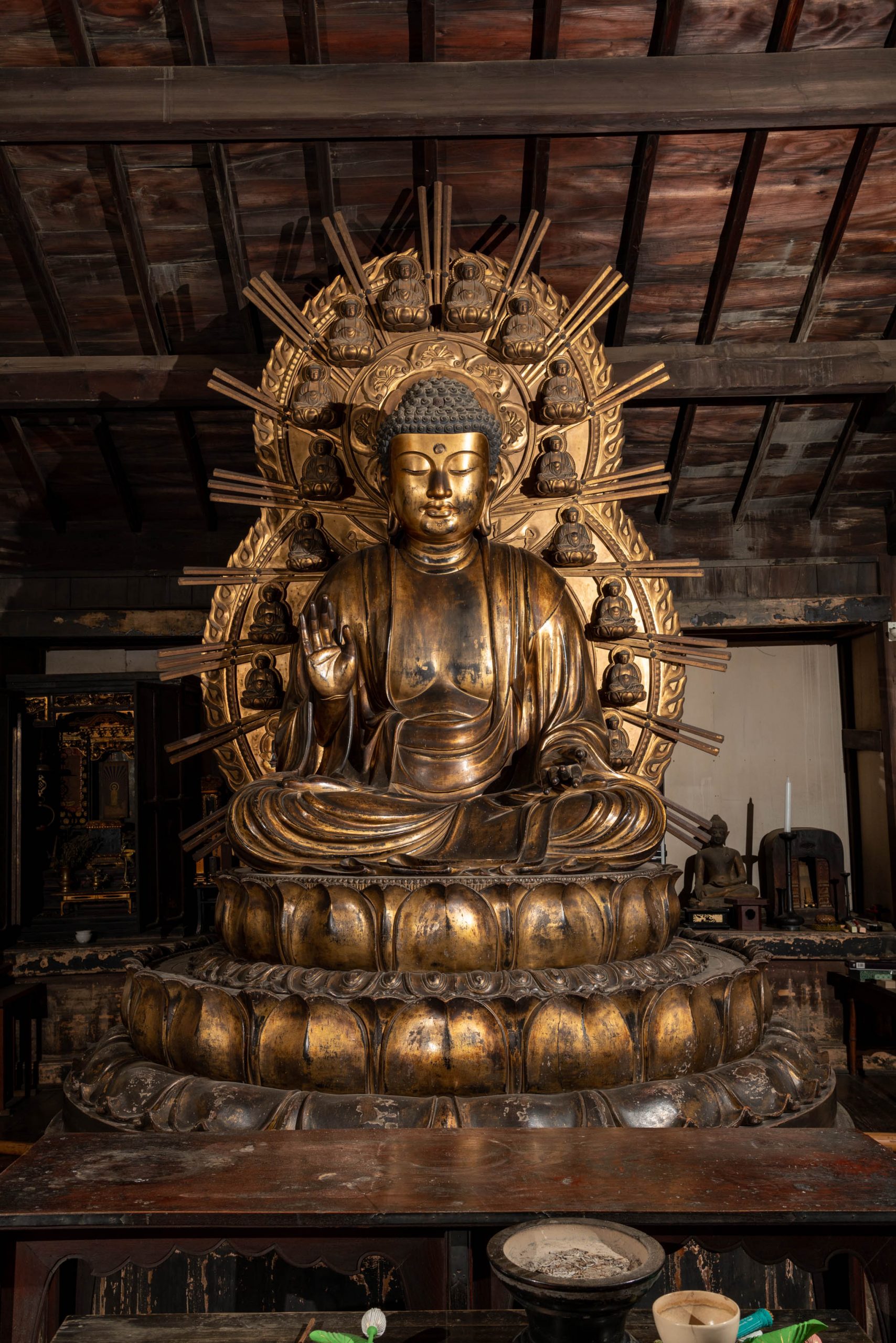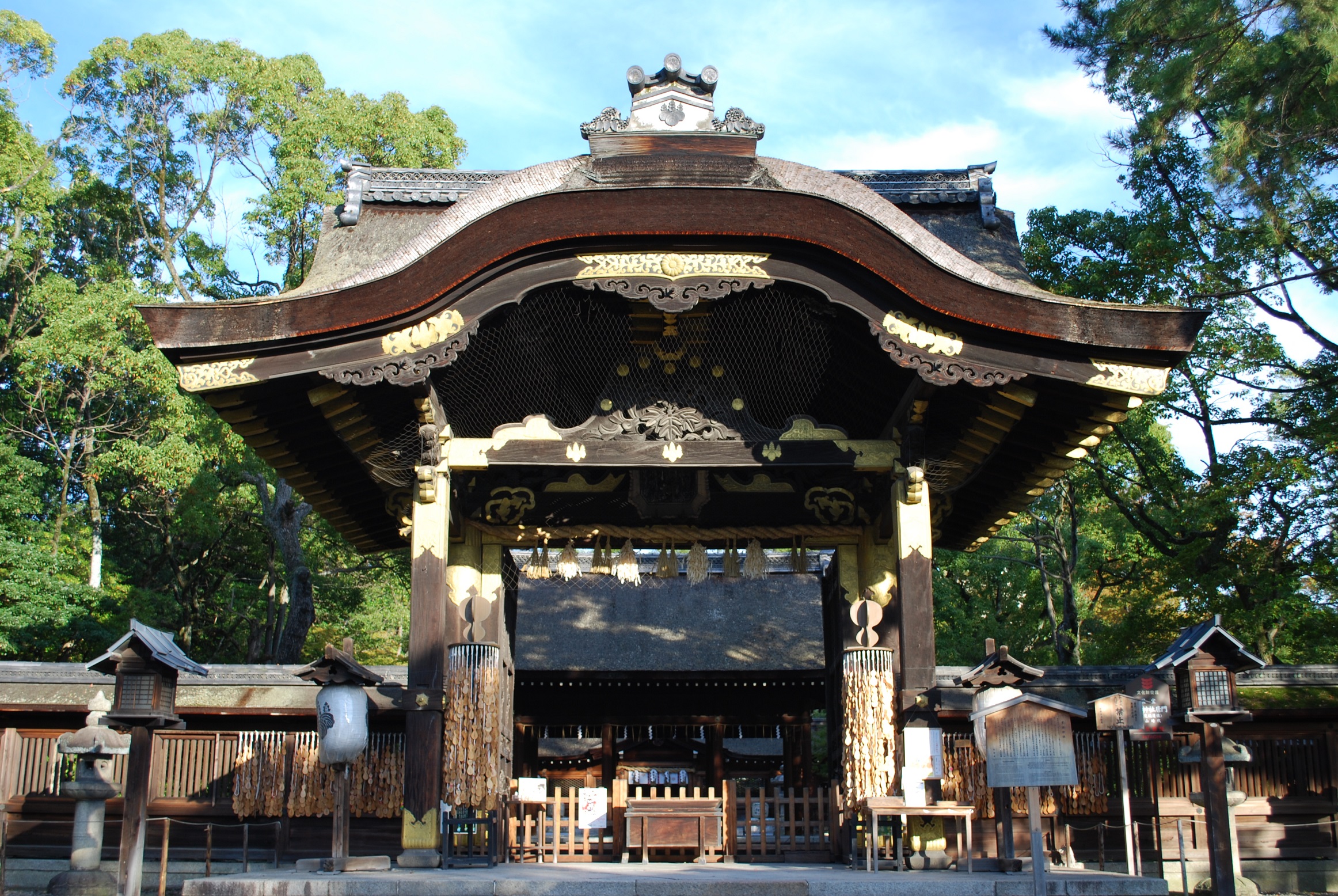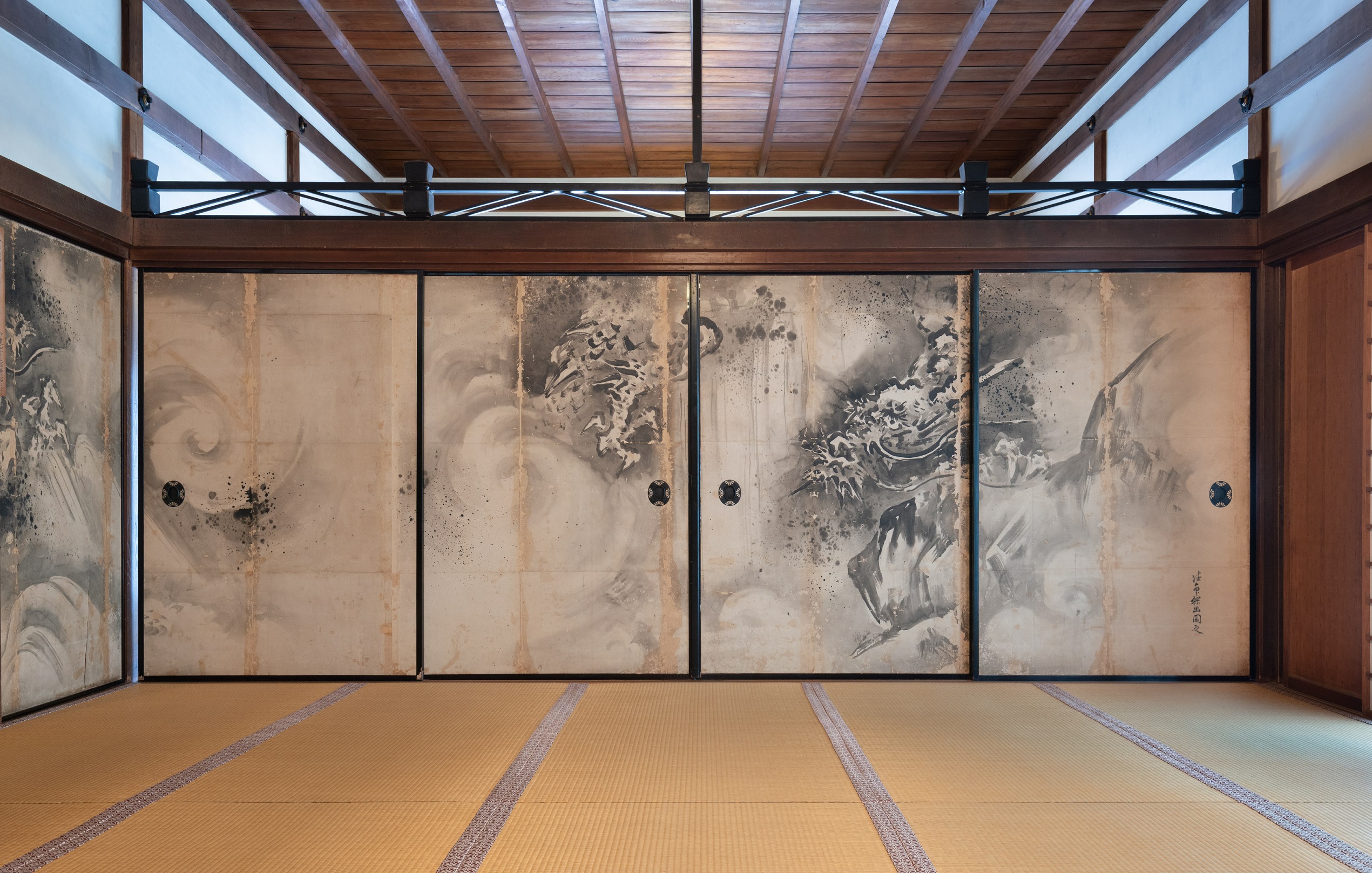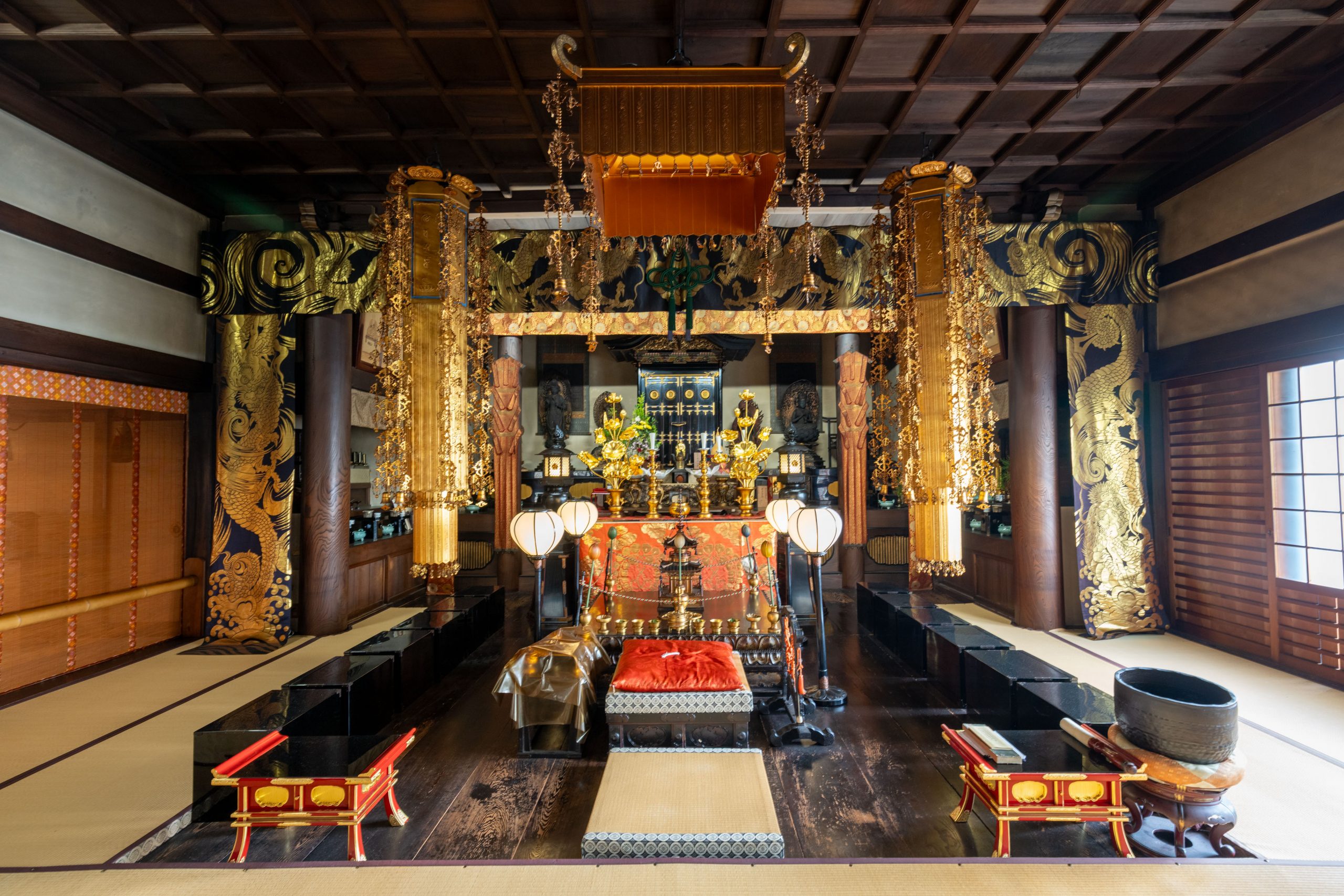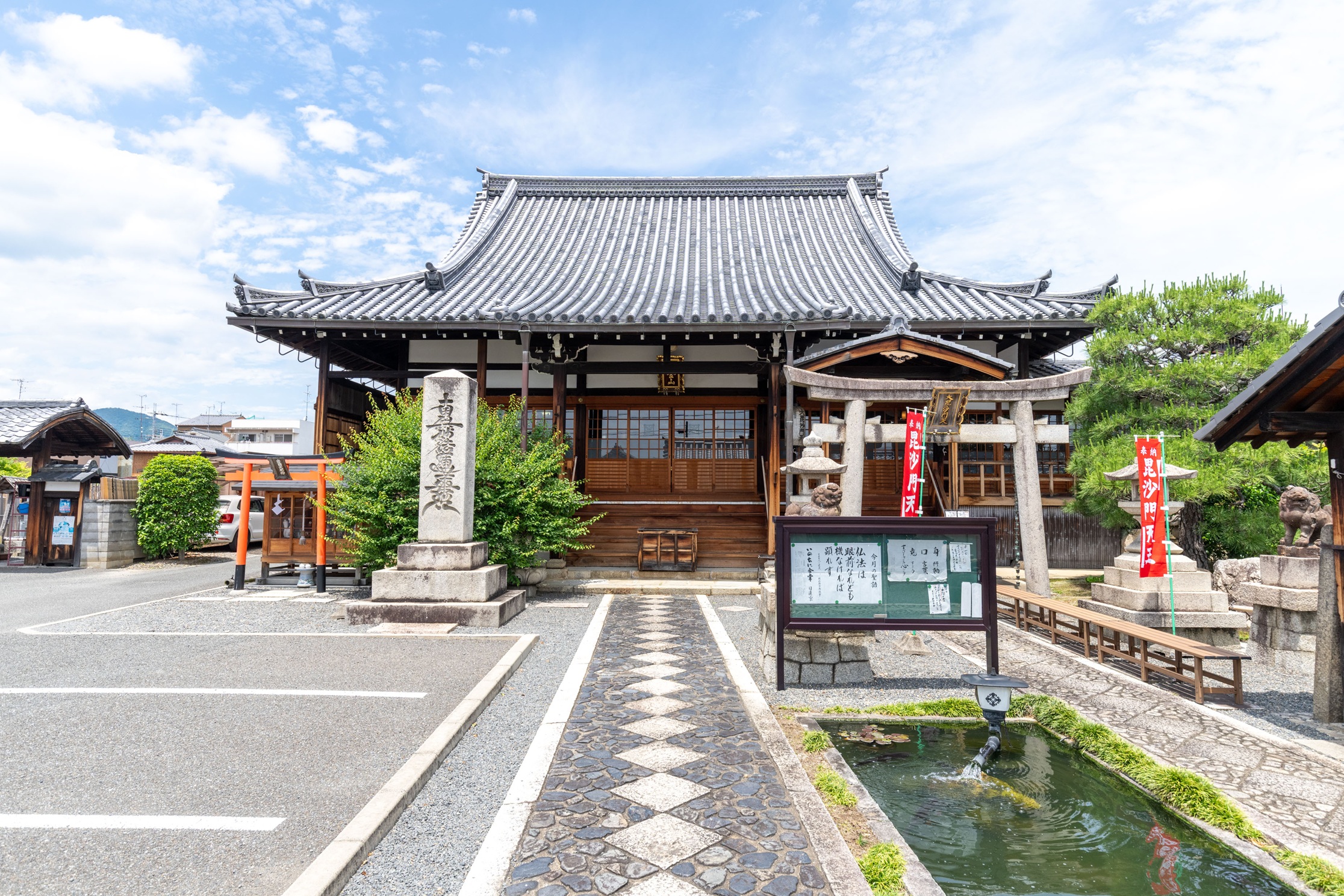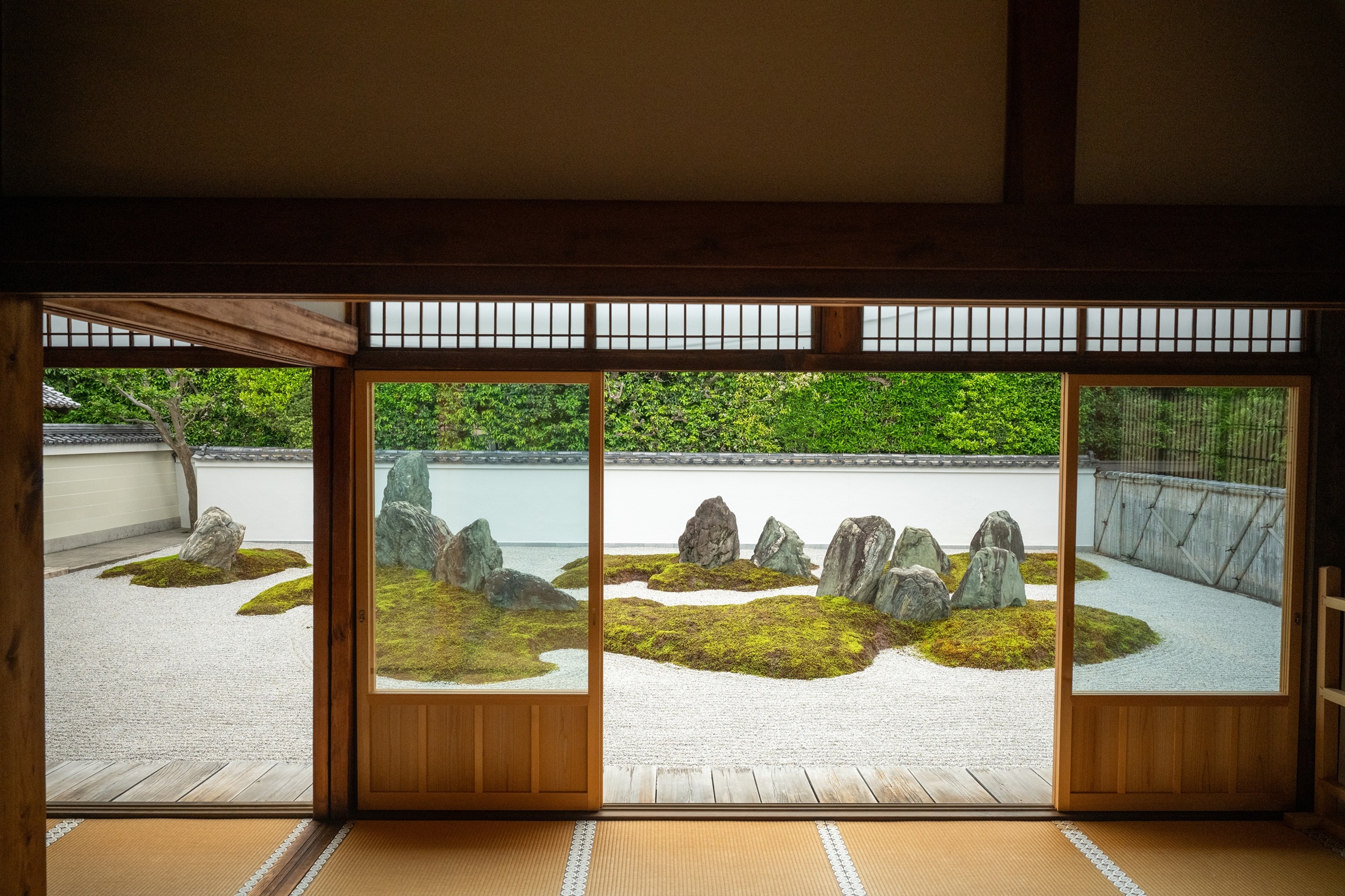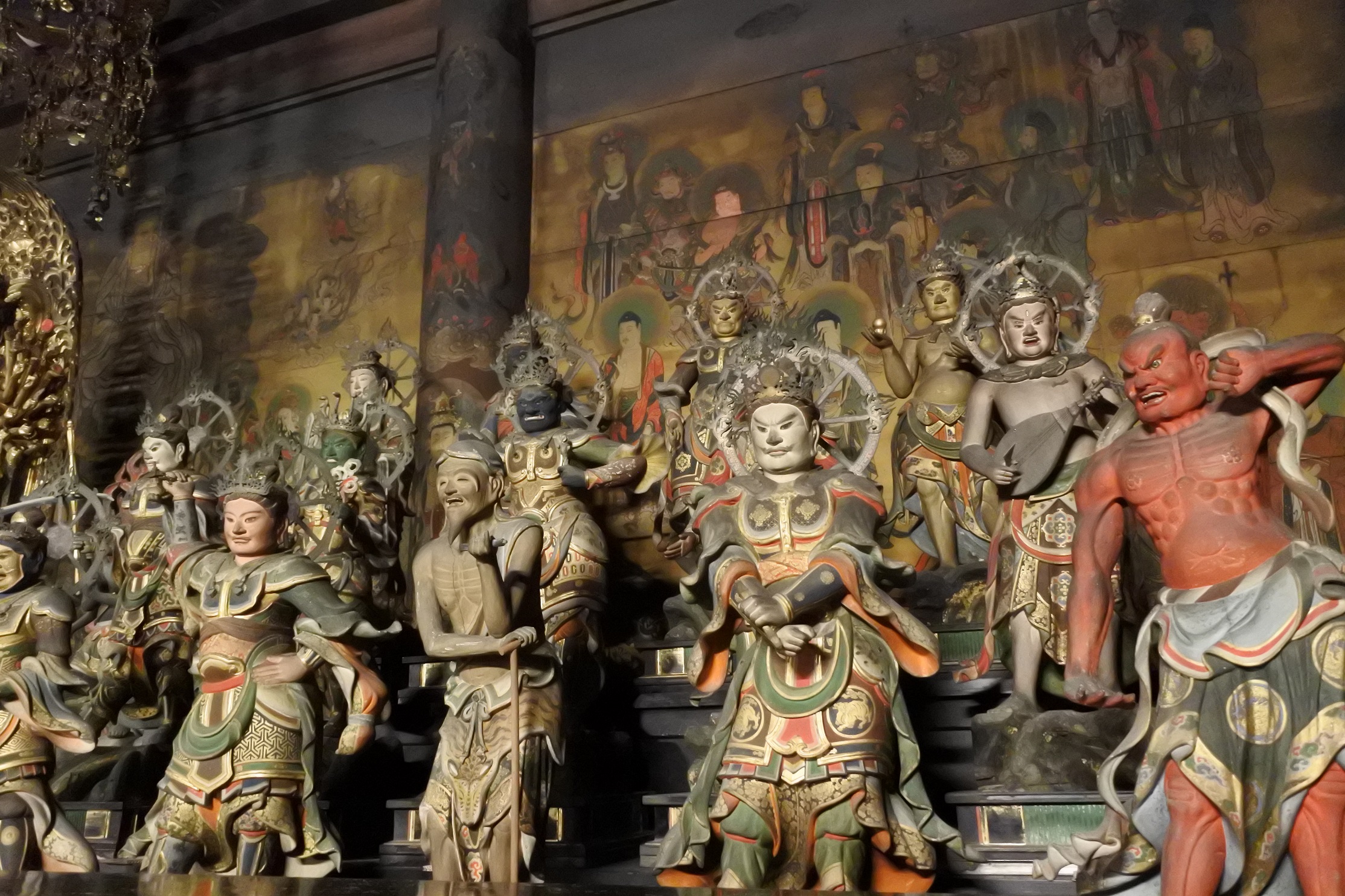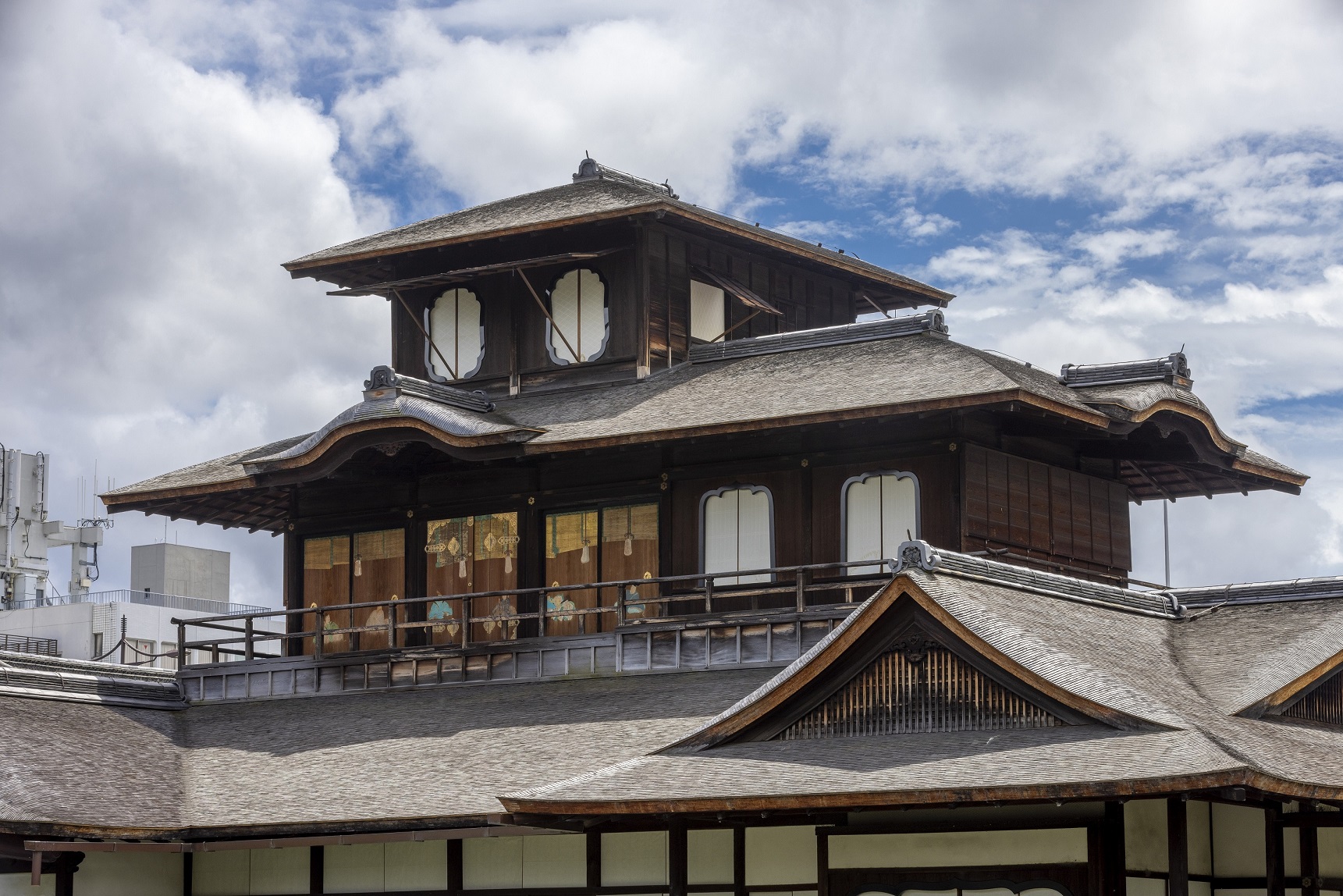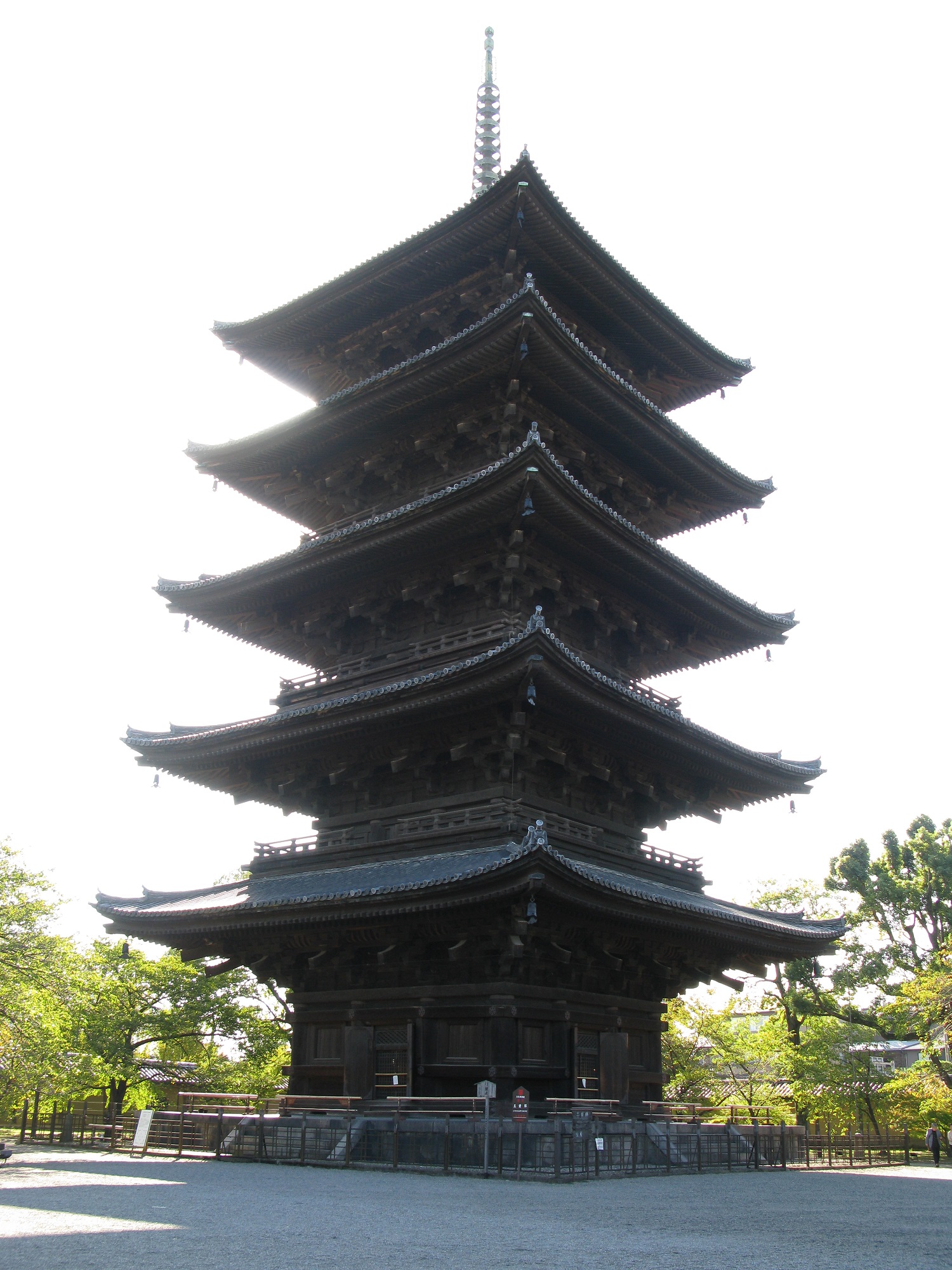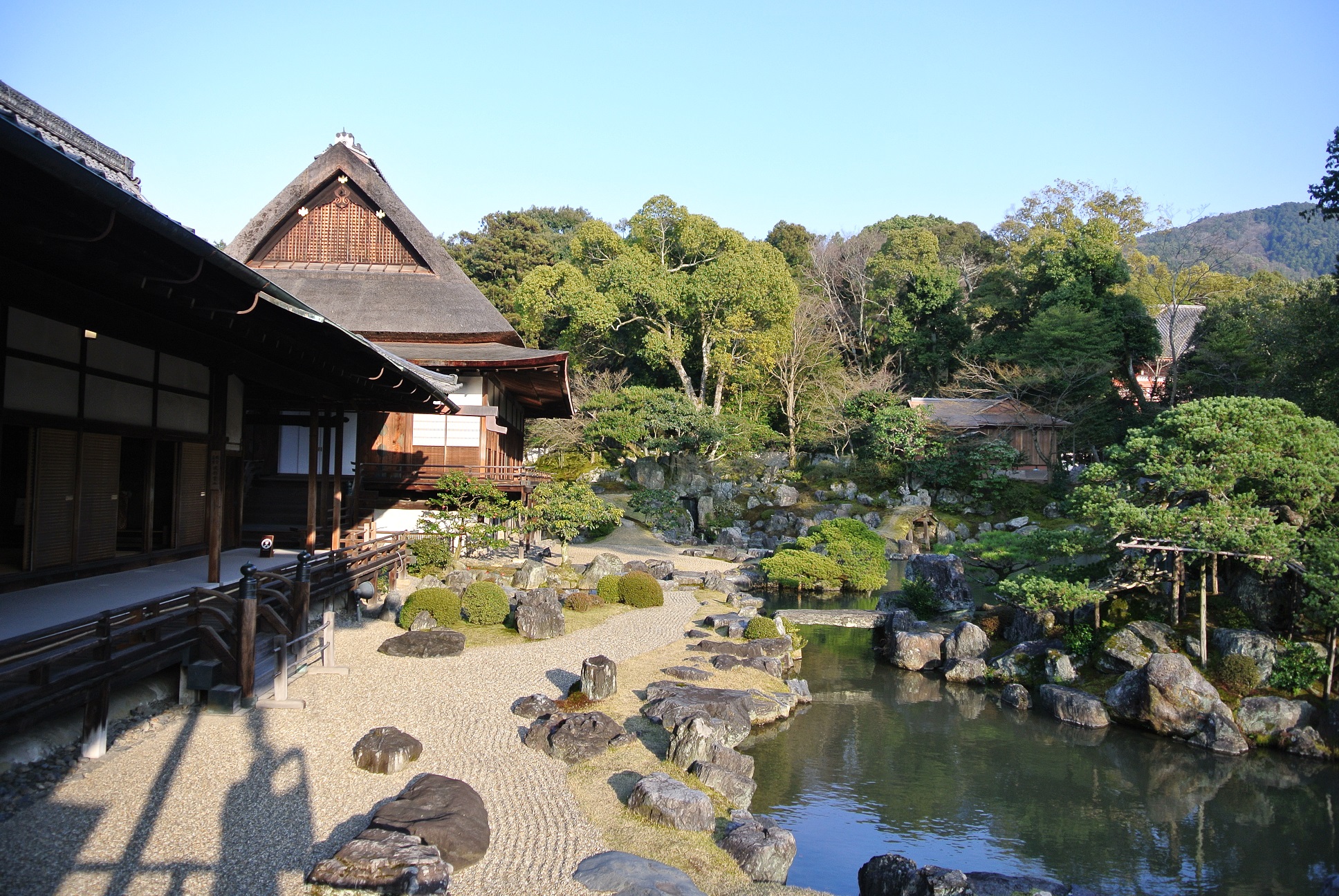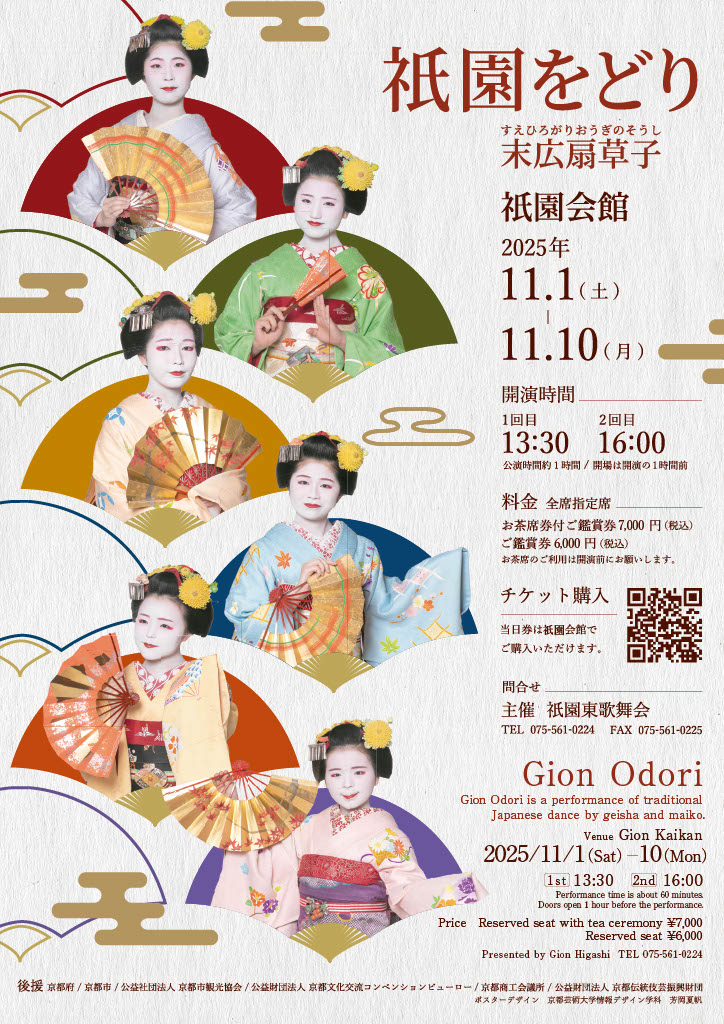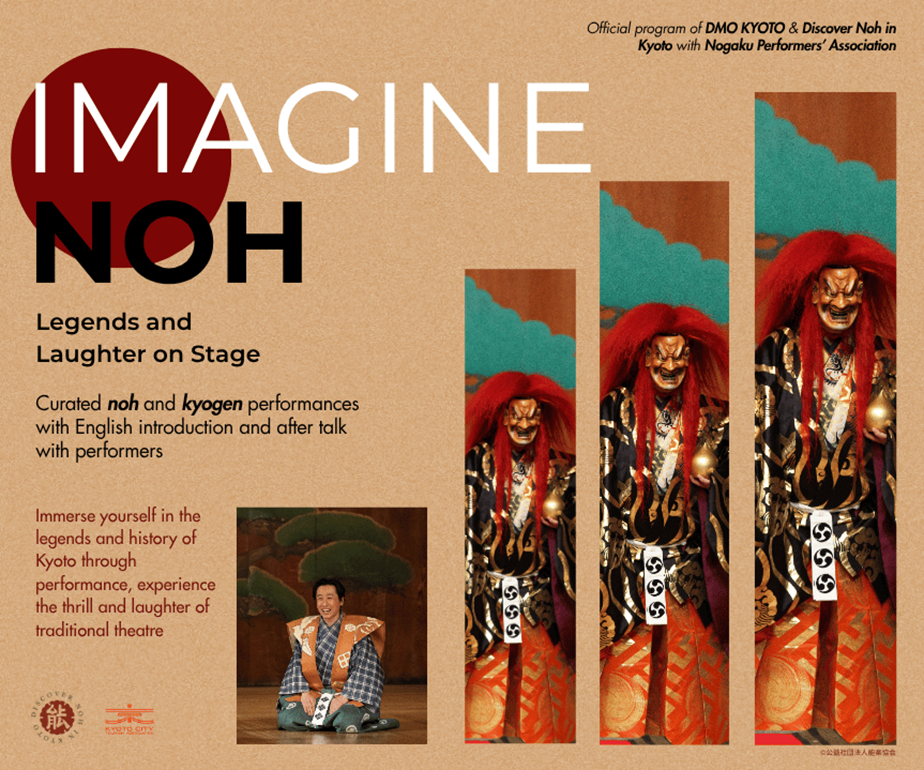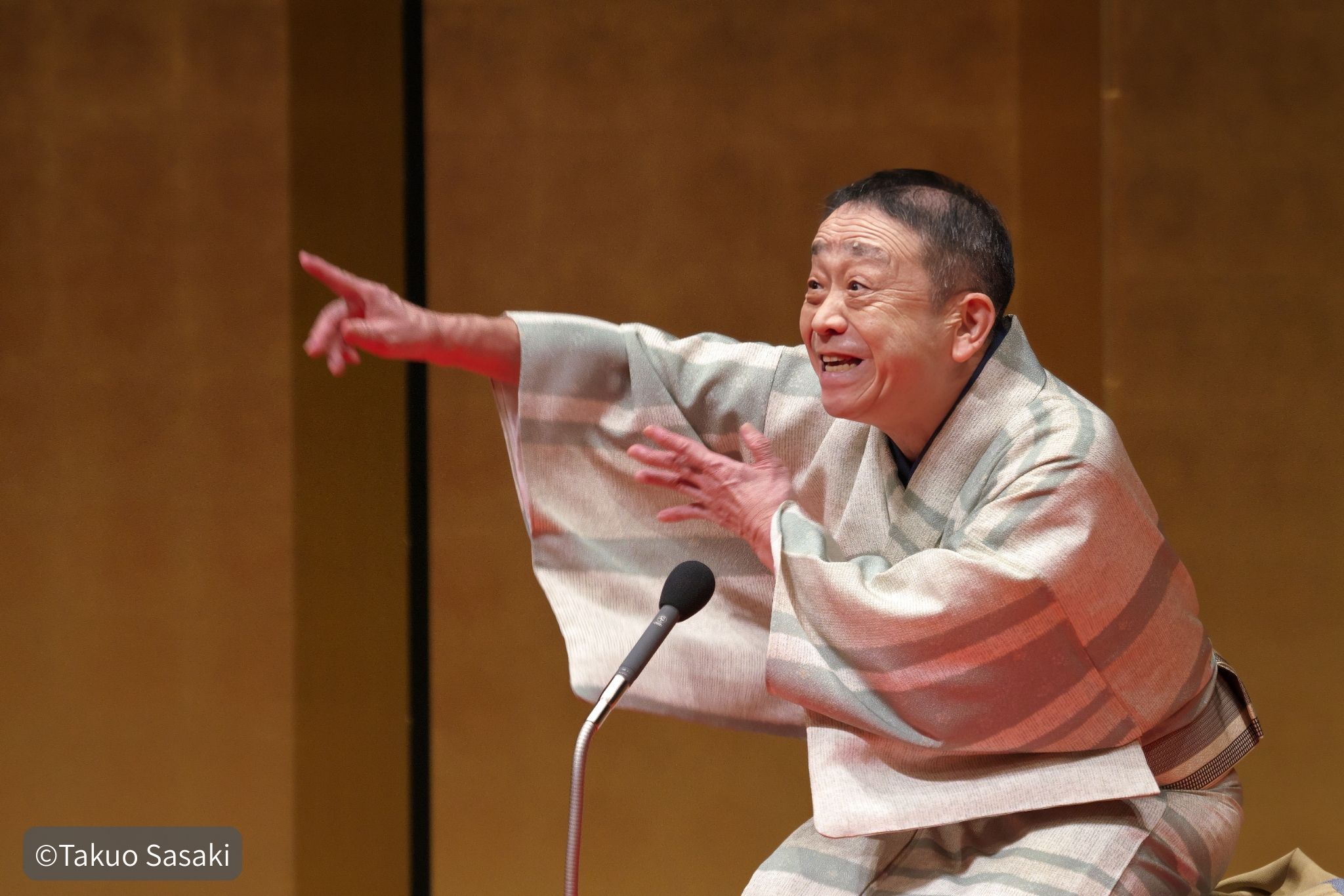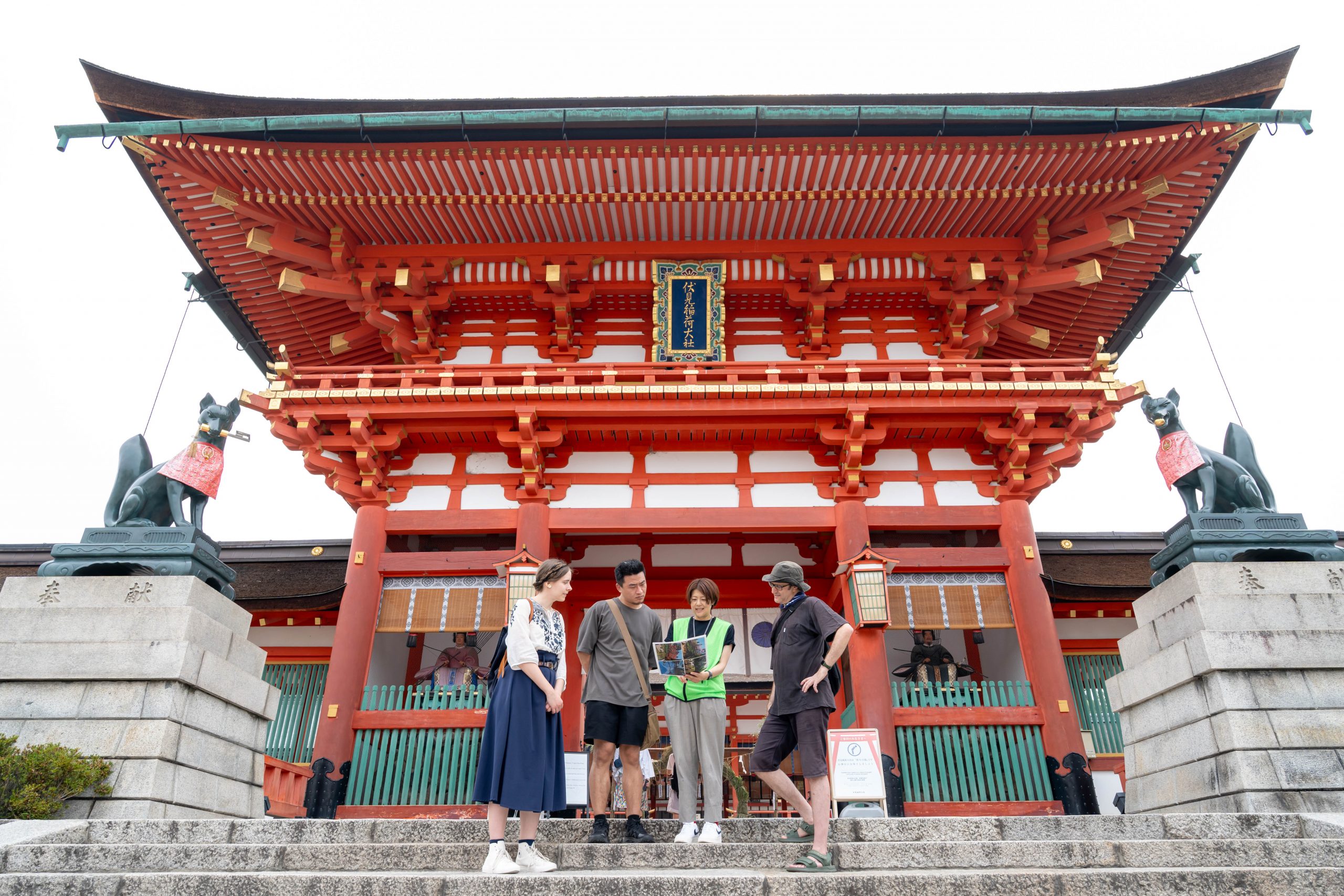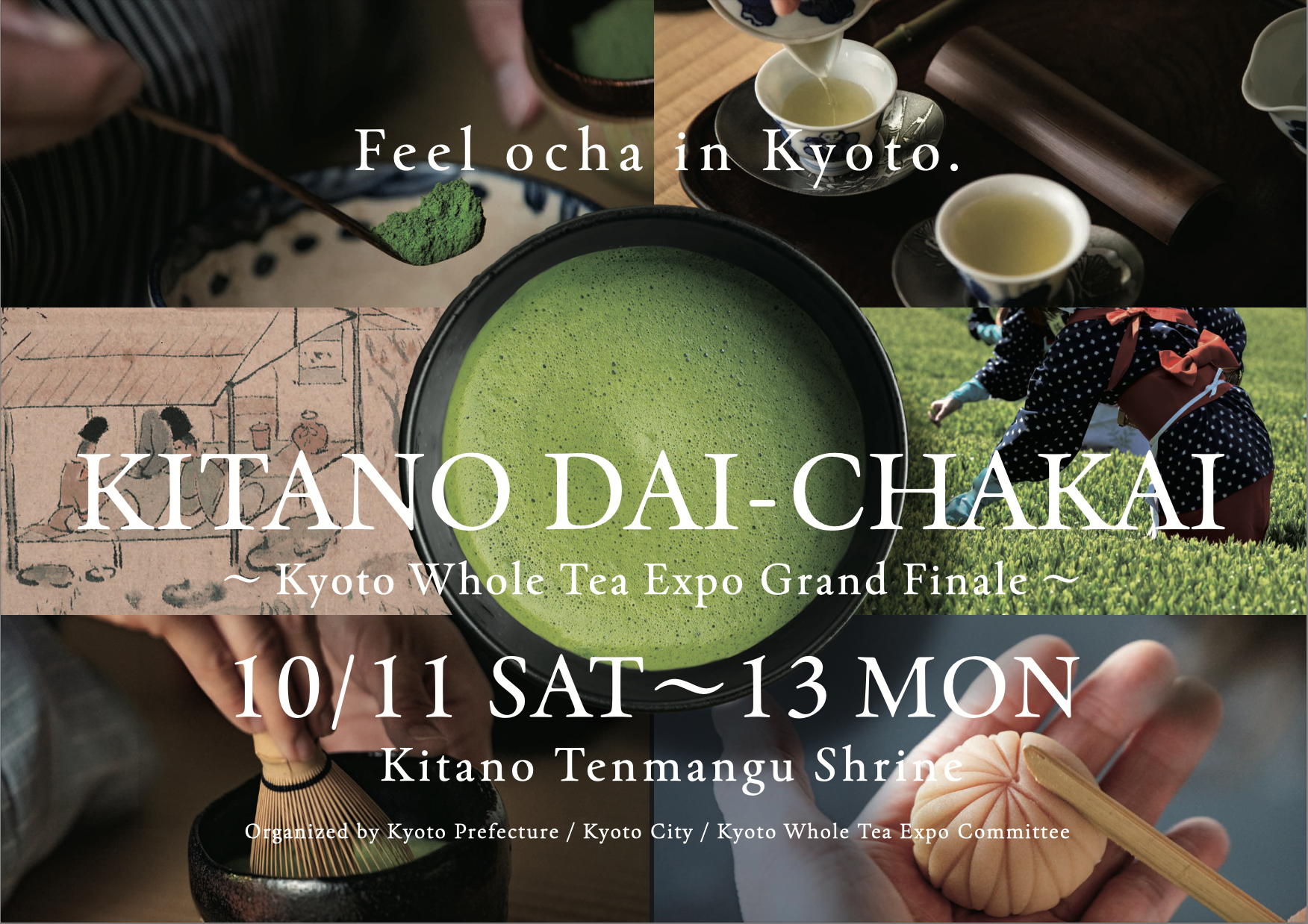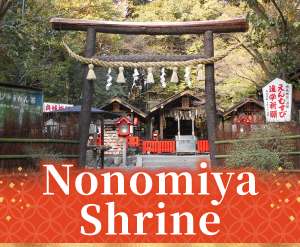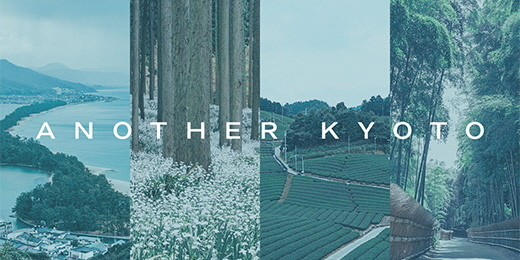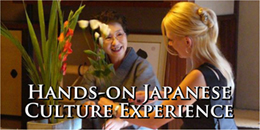The Kyoto Winter Special Openings is a program allowing visits to special sites, including temples, shrines and other historical buildings of cultural importance in Kyoto, for a limited period during the winter. The program is carried out according to different themes each year, promoting theme-based appreciation of historical and cultural assets. Although Kyoto has many heritage sites, including many National Treasures and Important Cultural Properties, only a limited portion of them is regularly shown to the public.
A portion of the admission fees will be used for the maintenance and preservation of these historical sites and their facilities, so that the cultural properties may be passed on to future generations.
Dates
January 9th (Fri) – March 18th (Wed), 2026
*Some of the places have different opening periods. Please check the section of each place for details.
There may also be dates or times of day where public viewing is not possible, due to ceremonial events or weather conditions (typhoon, etc.). Up-to-date information will be shown on this website, so please check prior to your visit.
Special opening hours
10:00 to 16:30 (last admission 16:00)
*The hours are different for some places. Please check the sections for each place for details.
Admission Fee (per place)
・Adults: ¥800
・Age 6 – 12: ¥400
*Free for children age 5 and below
*The fees are different for some places. Please check the section of each place for details.
NOTE
During your visit to temples, shrines, etc.; we ask you to please observe the following:
- No smoking
- No drinking
- No eating
- No photography in some areas. Please follow the instructions of each place when you wish to take photos. Some places may not allow photography of areas or objects related to religious worship. We ask for your understanding.
- Please unshoulder your backpack/shoulder bag or carry it in front of you in order to protect cultural properties. If possible, please check in large pieces of baggage. Please refrain from visiting barefoot.
- Please do not touch any cultural property (pictures on partitions, Buddhist statues, etc.).
*Some temples may be closed for Buddhist services without notice.
*On-site guidance is available in Japanese only. English information will be provided in print or digital text.
Details
1. Kodai-ji Temple
2. Hōkō-ji Temple
3. Toyokuni-jinja Shrine, Shoin Hall & Treasure Hall
4. Daitoku-ji Temple, Hatto Hall & Kyo-zo Hall
5. Daitoku-ji Temple, Daikō-in Temple
6. Nishijin Koshō-ji Temple
7. Fukushō-ji Temple
8. Kekō-ji Temple
9. Kōsei-ji Temple
10. Ninna-ji Temple Kannondo hall
11.Nishi Hongwan-ji Hiunkaku(Flying Cloud Pavilion)
12.Tō-ji Temple, Five-Story Pagoda
13.Daigo-ji Temple, Sanbō-in Temple
1. Kodai-ji Temple
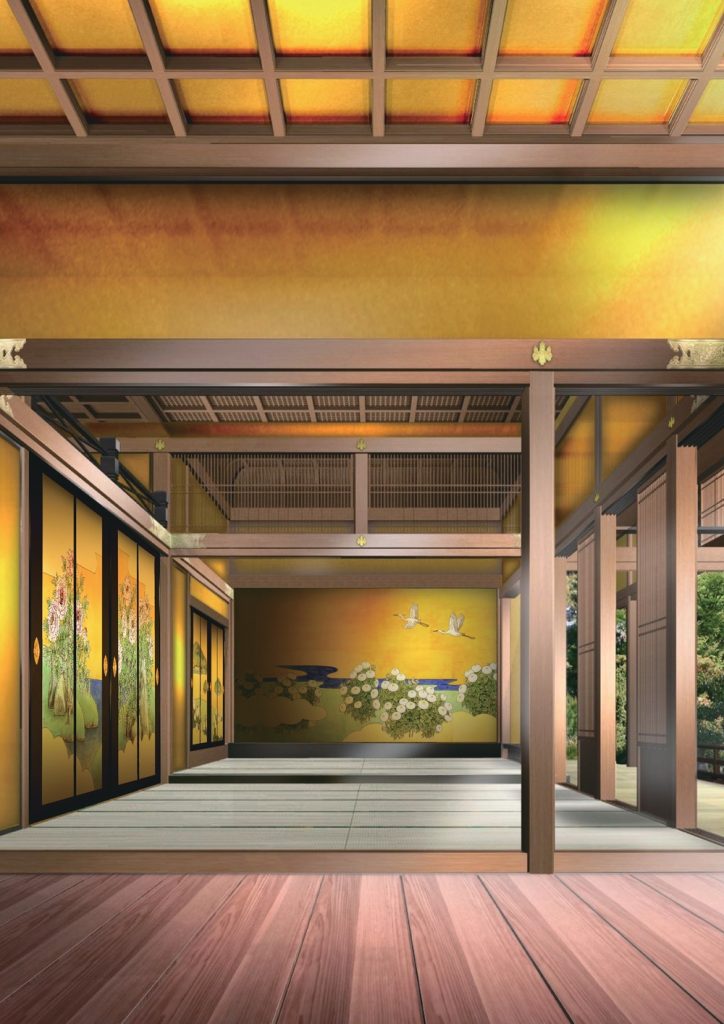
Reception hall — currently under reconstruction (concept image)
Kōdai-ji Temple was built in 1606 by Lady Nene to pray for the soul of her husband, the warlord Toyotomi Hideyoshi, who died after unifying Japan. The temple has a garden with a pond as well as a bamboo grove, and many structures and treasures that are masterpieces of the vibrant Momoyama period (1568-1600) style are present, including the tea rooms Kasa-tei and Shigure-tei, which were relocated here from Fushimi Castle, where Hideyoshi lived.
In the past, there also was a gorgeous reception hall, which originally had been built by Hideyoshi to hold banquets in Fushimi Castle and then relocated here. It was lost in a fire in 1789, but is now being rebuilt for the first time in 237 years. Although the rebuilding will not complete until around the summer of 2026, visitors to the temple’s main hall during this Winter Special Openings will be able to view golden fusuma-e paintings that have been created to decorate the restored hall upon its completion. Craftworks that Hideyoshi was fond of, along with valuable temple treasures related to warlords of the warring states period, will be specially exhibited as well.
| Dates | January 9th (Fri) – March 4th (Wed), 2026 |
| Hours | 9:00 – 17:30 (Admission until 17:00) |
| Admission Fee | Adults: ¥600 / Age 12-18: ¥250 (fee includes general admission) |
| Access | • From the JR Nara Line’s Tofuku-ji Station, take the Keihan Line to Gion-Shijo Station. 15-minute walk from the station. • From Kyoto Station, take City Bus No. 206 and get off at Higashiyama Yasui. 5-minute walk from the bus stop. |
2. Hōkō-ji Temple
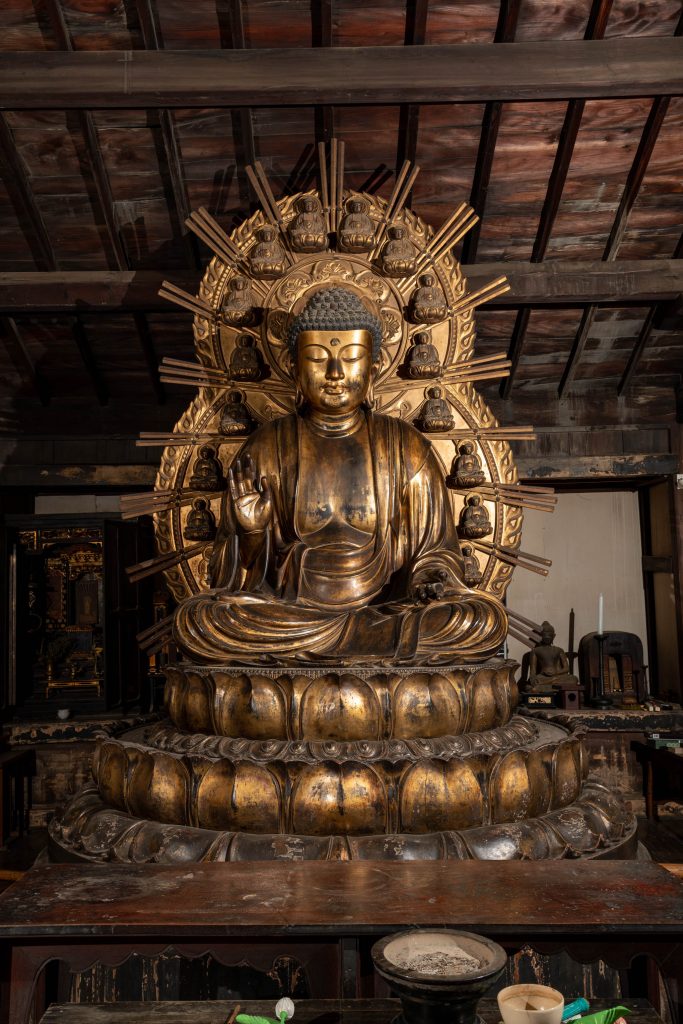
Hōkō-ji Temple was built by Toyotomi Hideyoshi to worship a giant Buddha statue, emulating Tōdai-ji Temple in Nara. A large worship hall housing a nineteen-meter-tall statue was built here, but was since lost in a fire and rebuilt several times. The main hall currently houses the temple’s principal image, a seated Rushana-butsu (Vairocana) statue, one tenth of the size of the original giant statue. During the Kyoto Winter Special Openings, a small, palm-sized image of the deity Daikokuten treasured by Hideyoshi himself will be specially shown to the public. In addition, visitors will be able to view a giant bell from a close distance. This bell is considered one of the “three great bells of Japan” in terms of size, and is also known for an episode in which an inscription on it brought about a conflict triggering a war that ultimately led to the demise of the Toyotomi family.
| Dates | January 9th (Fri) – March 18th (Wed), 2026 |
| Hours | 10:00 – 16:30 (Admission until 16:00) |
| Fee | Adults: ¥800 / Age 6-12: ¥400 |
| Access | • From the JR Nara Line’s Tofuku-ji Station, take the Keihan Line to Shichijo Station. 10-minute walk from the station. • From Kyoto Station, take City Bus No. 206 or No. 208 and get off at Hakubutsukan Sanjusangendomae. 5-minute walk from the bus stop. |
3. Toyokuni-jinja Shrine, Shoin Hall & Treasure Hall
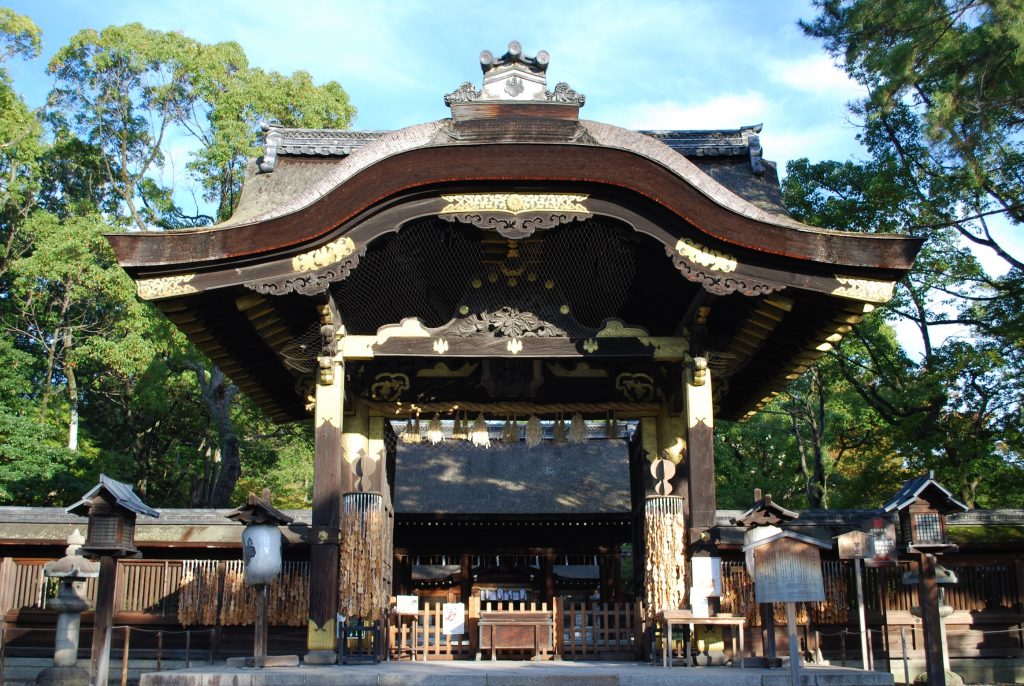
Toyokuni-jinja Shrine was dedicated to Toyotomi Hideyoshi and is a famous place to pray for career advancement and good fortune as well as for finding good relationships. Its gabled gate (karamon), built around the sixteenth century, has elaborate carvings of carps and cranes and is designated as a National Treasure.
During the Kyoto Winter Special Openings, a room to recieve guests (shoin) will be specially made open to public, exhibiting special items such as a haori jacket worn by Hideyoshi and a Rakuchū-Rakugai-zu folding screen painting depicting a map-like view of Kyoto. In addition, you can visit the shrine’s Treasure Hall to view items such as a wooden pillow in the form of a baku (a mythological dream-eating creature) that was used by Hideyoshi, as well as Hideyoshi’s molar. There will also be a special showing of the Toyokuni Sairei-zu folding screen painting (Important Cultural Property), which depicts the magnificent great statue hall that once existed, and Honebami-Tōshirō, which is a beautiful wakizashi sword with a blade engraved with a dragon and Fudō Myōō (the deity Acala).
*Honebami-Tōshirō will be shown until February 3rd (Tue), after this date, a replica will be exhibited in place of the original.
| Dates | January 9th (Fri) – March 18th (Wed), 2026 |
| Hours | 9:00 – 16:30 (Admission until 16:00) |
| Admission Fee | Adults: ¥1,000 /Age 6-12: ¥500 |
| Access | • From the JR Nara Line’s Tofuku-ji Station, take the Keihan Line to Shichijo Station. 10-minute walk from the station. • From Kyoto Station, take City Bus No. 206 or No. 208 and get off at Hakubutsukan Sanjusangendo-mae. 5-minute walk from the bus stop. |
4. Daitoku-ji Temple, Hatto Hall & Kyo-zo Hall
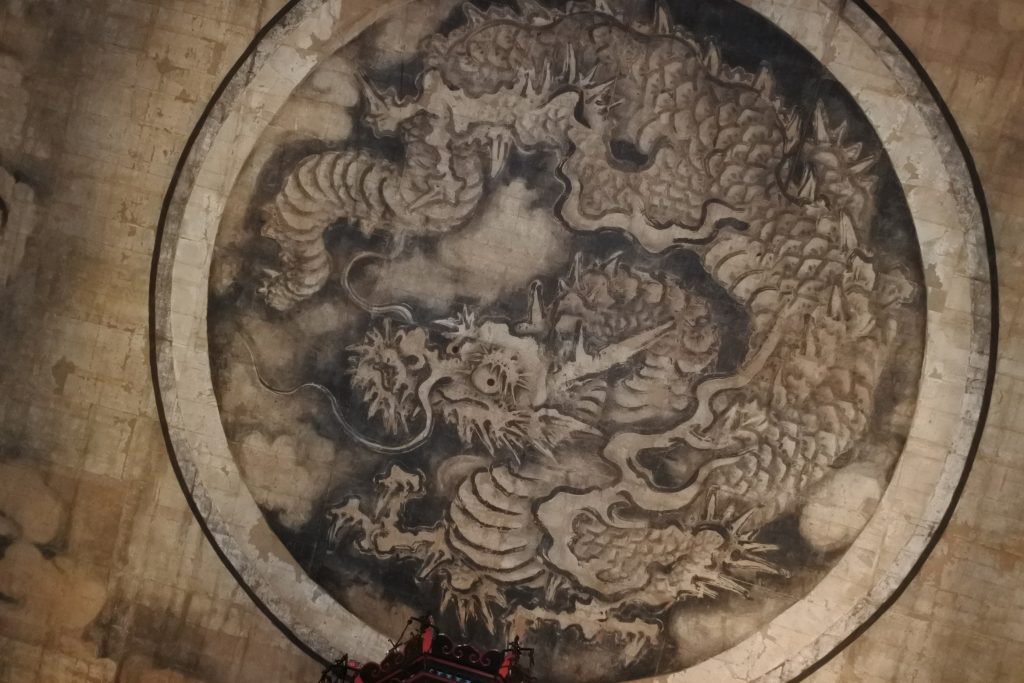
Daitoku-ji is a Zen temple that will reach the seven-hundredth anniversary of its founding in 2026.
Most of the buildings in the main temple are usually closed to the public, but visits to the Hattō (Dharma Hall) will be specially allowed during the Kyoto Winter Special Openings. A dragon is depicted on the ceiling of the Hatto Hall. This was painted by the seventeenth-century painter Kanō Tan’yū, and is famously known as the “roaring dragon” because the reverberating sound that occurs when clapping hands in the hall was imagined to resemble a dragon’s roar. The Kyo-zo Hall, which will also be made open to public, is a sutra repository that has a four-meter-tall, octagonal cabinet storing 3,500 sutras. It is said that rotating this cabinet once allows the person to acquire Buddhist merits equal to that of reading all of the sutras inside.
| Dates | January 9th (Fri) – March 18th (Wed), 2026 |
| Hours | 10:00 – 16:30 (Admission until 16:00) |
| Admission Fee | Adults: ¥800 / Age 6-12: ¥400 |
| Access | • From the JR Sagano Line’s Nijo Station, take City Bus No.206 and get off at Daitokuji-mae. 7-minute walk from the bus stop. • From Kyoto Station, take the City Subway Karasuma Line to Kitaoji Station, then take City Bus No. 204, No. 205 or No. 206 and get off at Ditokuji-mae. 7-minute walk from the bus stop. |
5. Daitoku-ji Temple, Daikō-in Temple
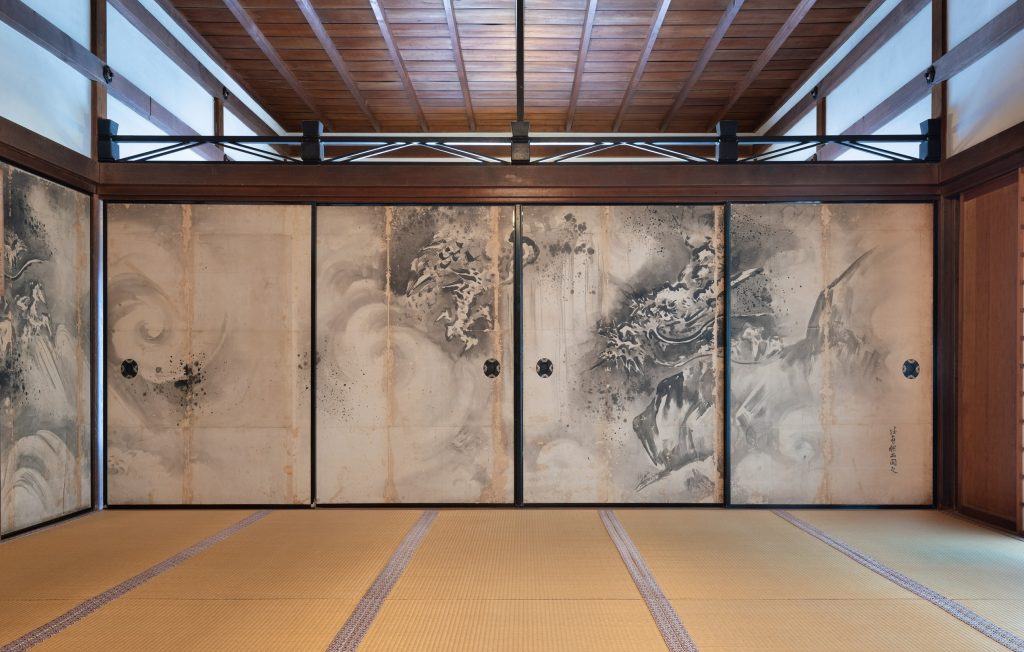
Daikō-in Temple was originally built in Nara to pray for the soul of Toyotomi Hideyoshi’s younger brother Hidenaga, and was later moved to Daitoku-ji Temple. The current building was built in the Edo period and relocated as-is to its present location.
The temple’s main hall houses a wooden statue of Hidenaga, and a Koku-Unryū-zu (a painting of a dragon in dark clouds) decorates the fusuma sliding doors. This painting is believed to be a work of Kanō Tan’yū, a prominent painter of the 17th century, and was originally a byōbu-e (folding screen painting) before it was reattached to these doors. In addition, Hoan, a small tea room with a floor size of three tatami mats, will also be specially made open to the public.
| Dates | January 9th (Fri) to March 18th (Wed), 2026 *Closed to the public on February 15th (Sun) – 17th (Tue). |
| Hours | 10:00 – 16:30 (Admission until 16:00) |
| Admission Fee | Adults: ¥800 /Age 6-12: ¥400 |
| Access | • From the JR Sagano Line’s Nijo Station, take City Bus No.206 and get off at Kenkunjinja-mae. 2-minute walk from the bus stop. • From Kyoto Station, take the City Subway Karasuma Line to Kitaoji Station, then take City Bus No. 204, No. 205 or No. 206 and get off at Kenkunjinja-mae. 2-minute walk from the bus stop. |
6. Nishijin Koshō-ji Temple
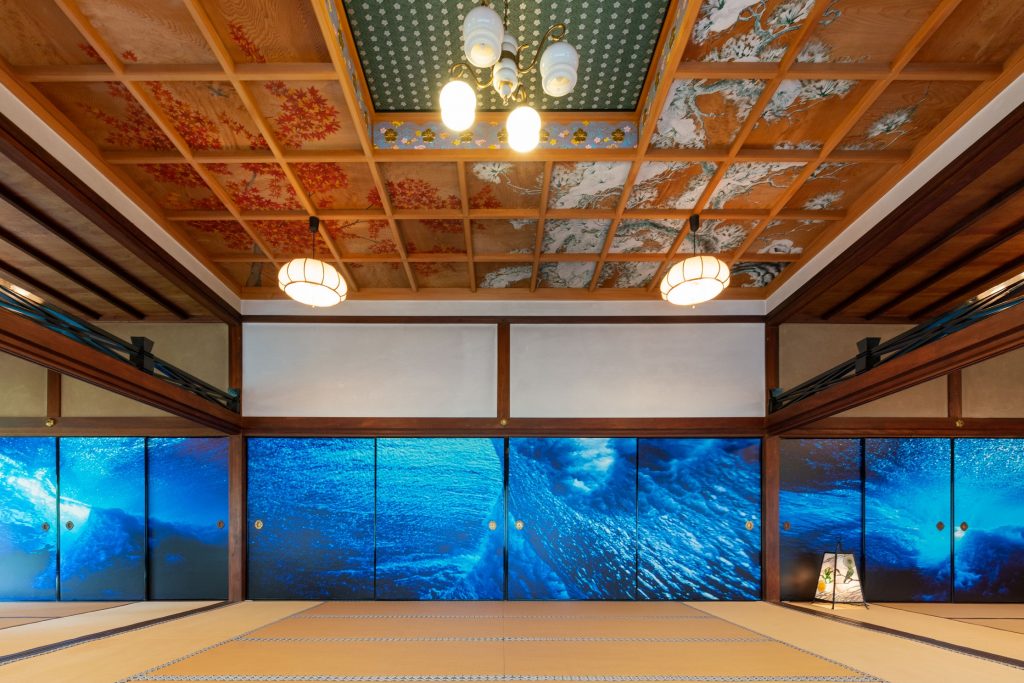
Nishijin Kōshō-ji is a temple associated with Furuta Oribe, a warrior who served Oda Nobunaga and Toyotomi Hideyoshi. Oribe was a tea master known for his free and creative aesthetics, and he became the founder of the Oribe School of tea ceremony.
The ceiling of the main hall features an Unryū-zu, a painting of a dragon among clouds, and the principal image enshrined is that of Shakyamuni Buddha. During the Kyoto Winter Special Opening, a large Daruma-zu painting—one of the largest portraits of Bodhidharma in Japan, normally displayed only once a year on a special day in October—is exhibited to the public. Bodhidharma was a monk said to be the founder of Zen Buddhism in China.
Other highlights include sliding doors decorated with photographs capturing scenes of light beneath the blue sea, and a tearoom featuring a stone water basin (tsukubai) set into a deeply dug ground.
| Dates | January 9th (Fri) – March 18th (Wed), 2026 |
| Hours | 10:00 – 16:30 (Admission until 16:00) |
| Admission Fee | Adults: ¥800 / Age 6-12: ¥400 |
| Access | • From Kyoto Station, take the City Subway Karasuma Line to Kuramaguchi Station and exit from Exit No.1. 13-minute walk from the station. • From Kyoto Station, take City Bus No. 9 and get off at Tenjinkoen-mae. 1-minute walk from the bus stop |
7. Fukushō-ji Temple
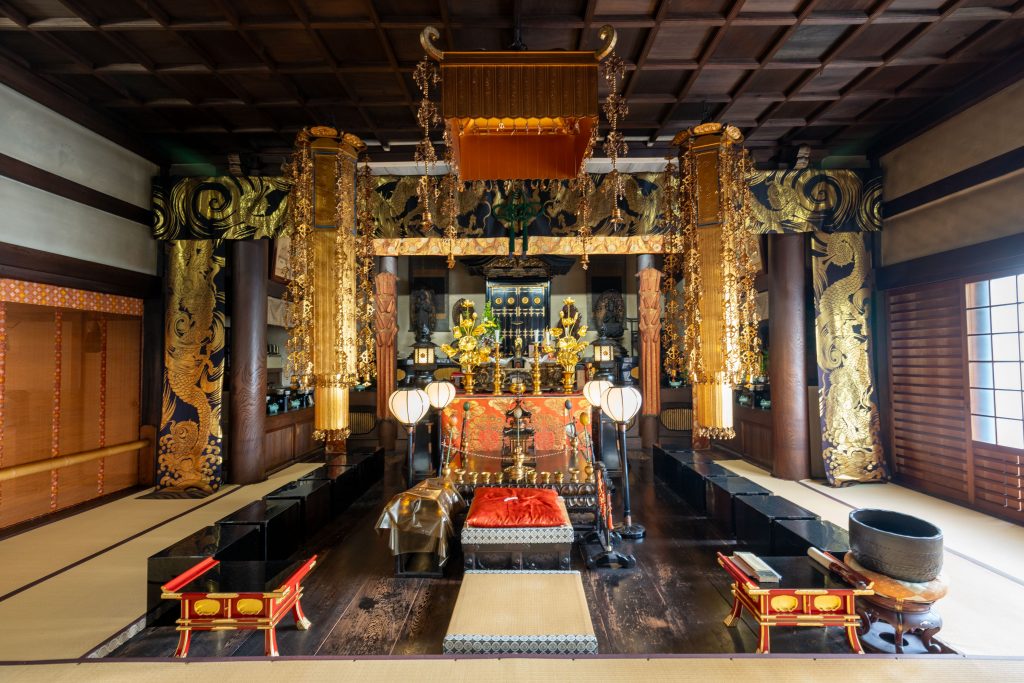
Fukushō-ji Temple is said to have been founded by the famous priest Kūkai (774-835) and is one of the Thirty-Three Sites of Kannon Worship in Kyoto.
The main hall houses several ancient Buddhist statues, one of which is a Shō-Kannon-Bosatsu, the “Saint Kannon Boddhisatva,” that is over a thousand years old.
In addition, on the right side of the main hall is the Shōten-dō hall, which has a cylindrical, small shrine containing a statue of Kangiten, a hidden Buddhist image once worshiped by Toyotomi Hideyoshi. Every time there was a battle, Hideyoshi would make an offering of a bottle gourd (hyōtan) at this hall to pray for victory. Whenever he won a battle, he would take home the gourd. And as these gourds accumulated, he used them as his symbol (umajirushi) to distinguish friend from foe on the battlefield. Fukushōji is sometimes called “Hyōtan-dera” (“Bottle Gourd Temple”) for this reason. The temple is currently well known as a good place to pray for safety, good health, and financial luck.
| Dates | January 9th (Fri) – March 18th (Wed), 2026 *Closed to the public on January 16th (Fri), 19th (Mon), February 1st (Sun) – 4th (Wed), 16th (Mon), March 1st (Sun) and 16th (Mon). |
| Hours | 10:00 – 16:30 (Admission until 16:00) |
| Admission Fee | Adults: ¥800 / Age 6-12: ¥400 |
| Access | • From Kyoto Station or from the JR Sagano Line’s Nijo Station, 15-minute walk from the station or take the City Bus No. 52 and get off at Shichihonmatsu Demizu. 3-minute walk from the bus stop. • From Kyoto Station, take City Bus No. 6 or No. 206 and get off at Senbon Demizu. 3-minute walk from the bus stop. |
8. Kekō-ji Temple
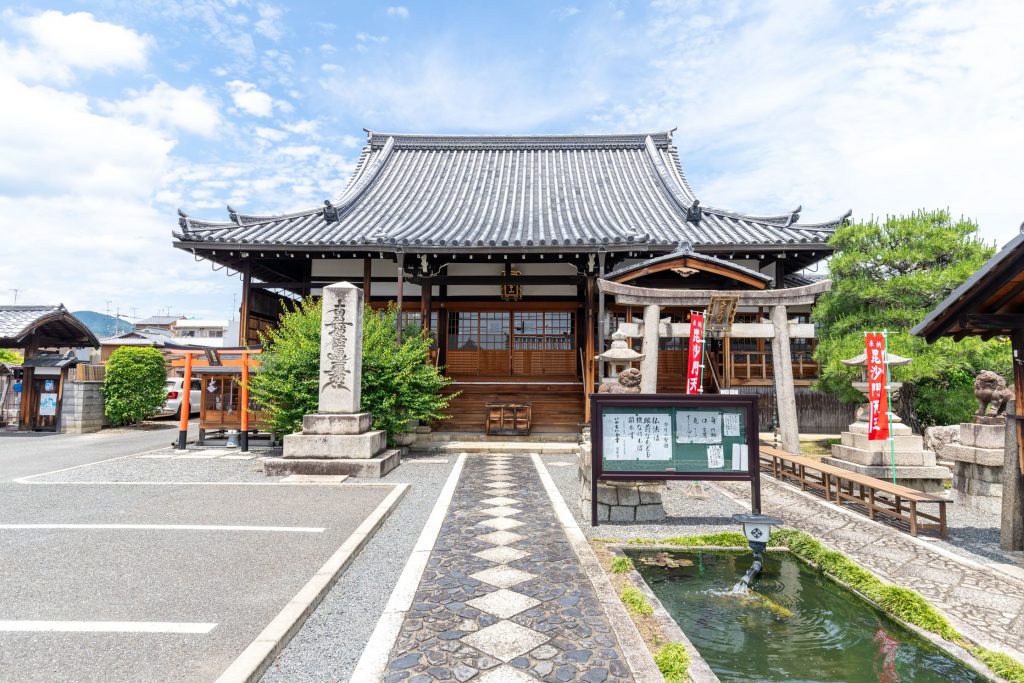
Kekō-ji Temple was built in 1583 under the patronage of Toyotomi Hideyoshi.
Visitors can view a statue of the deity Bishamon-ten. This wooden statue, which is believed to have been created in the Heian period (794-1185), is about 160 centimeters-tall and dressed in armor, and is said to have been formerly worshiped by Hideyoshi in Fushimi Castle. It has gained popularity as a statue to pray for good fortune.
The temple gate is believed to have been relocated here from Fushimi Castle as well at the time of the temple’s founding.
In the drawing room (shoin) is an old stump of a pine tree that was originally planted by Hideyoshi. The tree was called the “Drizzling Pine” (“Shigure Matsu”) for the reason that drops of water would mysteriously fall from it even on a sunny day, and is regarded as one of the “seven wonders” of the Demizu-dori area where Kekōji is located.
Paintings and other temple treasures will be specially made open to public as well.
| Dates | January 9th (Fri) – March 18th (Wed), 2026 *Closed to the public on February 1st (Sun). *Opens 13:00 on March 1st (Sun). |
| Hours | 10:00 – 16:30 (Admission until 16:00) |
| Admission Fee | Adults: ¥800 / Age 6-12: ¥400 |
| Access | • From Kyoto Station or from the JR Sagano Line’s Nijo Station, 15-minute walk from the station or take the City Bus No. 52 and get off at Shichihonmatsu Demizu. 2-minute walk from the bus stop. • From Kyoto Station, take City Bus No. 6 or No. 206 and get off at Senbon Demizu. 4-minute walk from the bus stop. |
9. Kōsei-ji Temple
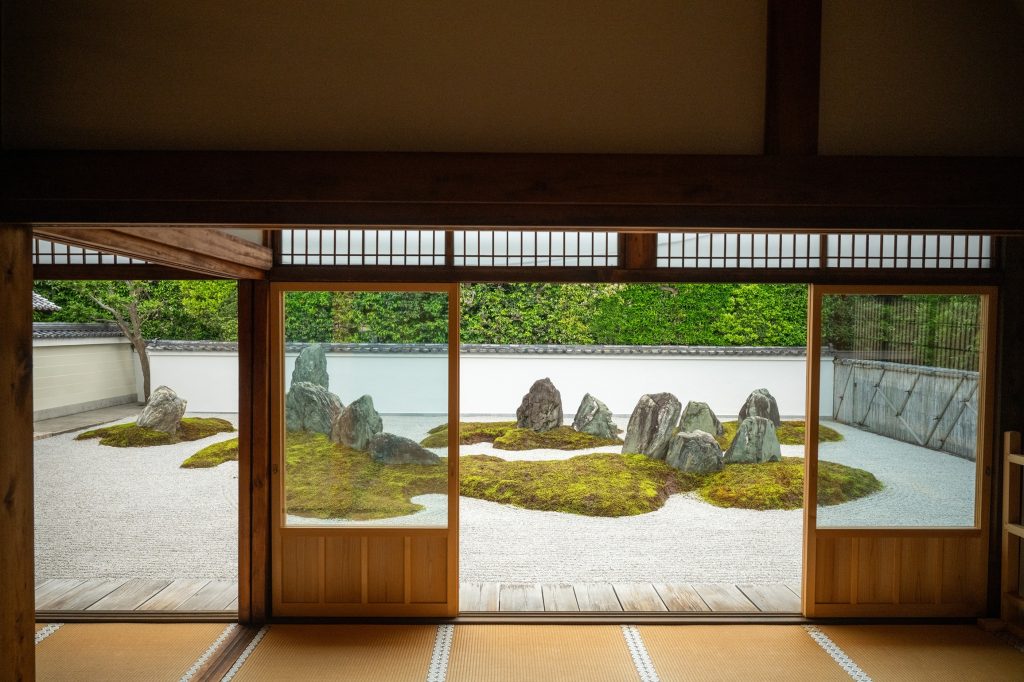
photographed by kyotophotograph
Kōsei-ji Temple is famous for its Shinwa-no-niwa, a dry landscape garden that spreads in front of the temple’s main hall. This garden was created by the famous landscape artist Shigemori Mirei (1896-1975), and has a unique design in which moss and rocks form the kanji for “kokoro” (heart/mind).
The main hall houses the temple’s principal image, a Shō-Kannon-Bosatsu that is believed to have been created in the Heian period (794-1185).
In addition, on a wall in the main hall is a famous wooden plaque that was created in the Edo period (1600-1868), depicted with peonies, butterflies, and a cat. According to legend, the cat used to come out of the plaque and dance whenever it heard the sound of a shamisen instrument. The abbot of the time used divine power to seal the cat into the plaque, but the cat appeared in the abbot’s dream and asked for forgiveness, so the abbot undid the seal. This plaque is regarded as one of the “seven wonders” of the Demizu-dori area where Kōsei-ji is located.
| Dates | January 9th (Fri) – February 23th (Mon), 2026 *Closed to the public on January 18th (Sun) and February 8th (Sun). *Opens 13:00 on January 25th(Sun), February 1st (Sun) and 15th (Sun). |
| Hours | 10:00 – 16:30 (Admission until 16:00) |
| Admission Fee | Adults: ¥800 / Age 6-12: ¥400 |
| Access | • From Kyoto Station or from the JR Sagano Line’s Nijo Station, 15-minute walk from the station or take the City Bus No.52 and get off at Shichihon Demizu. 2-minute walk from the bus stop. • From Kyoto Station, take City Bus No. 6 or No. 206 and get off at Senbon Demizu. 4-minute walk from the bus stop. |
10. Ninna-ji Temple Kannon-do hall
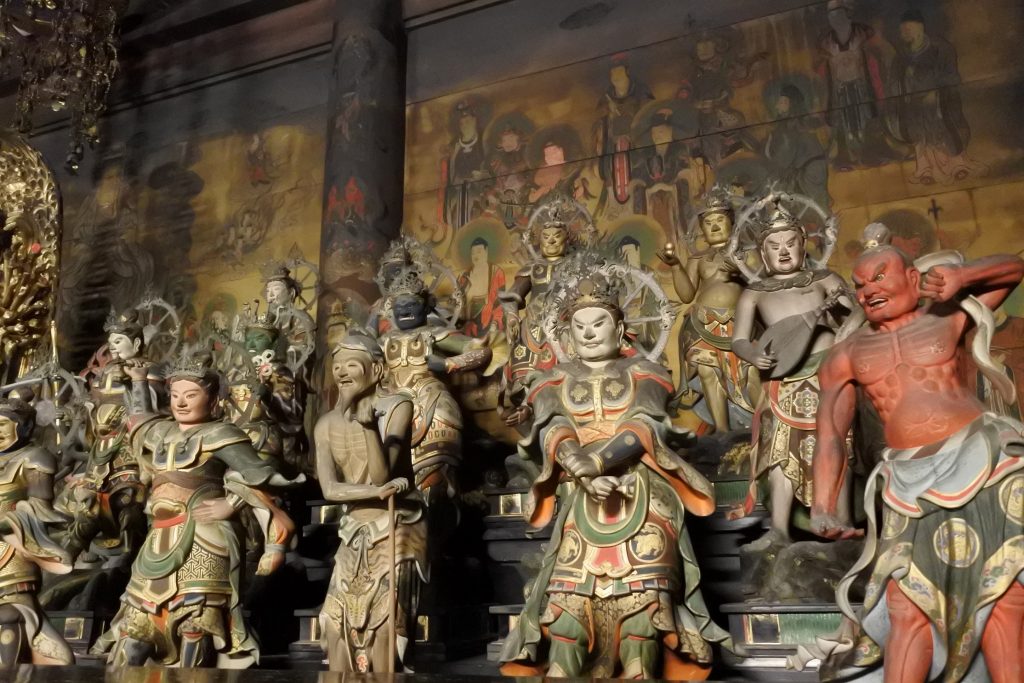
World Heritage Site
Ninna-ji Temple was built in 888 CE, and it has been designated as a UNESCO World Heritage site. Emperor Uda (867-931) was born here, and he later lived here as the first head priest. Ninna-ji is what is called a monzeki temple. Monzeki refers to Buddhist priests of aristocratic or imperial lineage, priests who served the imperial family, and the temples where they lived. Ninna-ji is the head temple of the Omuro school of Shingon Buddhism.
Most of its head priests came from the imperial family, and the head priest’s residence was called “Omuro,” an honorific term for “dwelling.”
| Dates | January 9th (Fri) – March 17th (Tue), 2026 *Closed to the public on January 18th (Sun) and February 18th (Wed). |
| Hours | 10:00 – 16:00 (Admission until 15:30) from January to February, 10:00 – 16:30 (Admission until 16:00) in March. |
| Admission Fee | Adults: ¥ 700 / Free for persons age 18 and below |
| Access | • From Kyoto Station or from the JR Sagano Line’s Enmachi Station, take City Bus No. 26 or JR Bus and get off at Omuro-Ninnaji. • From Kyoto Station, take the JR Sagano Line to Uzumasa Station, and take the Keifuku Line (Randen) from Satsueijo-mae Station to Omuro-Ninnaji Station. 3-minute walk from the station. |
11. Nishi Hongwan-ji Hiunkaku(Flying Cloud Pavilion)
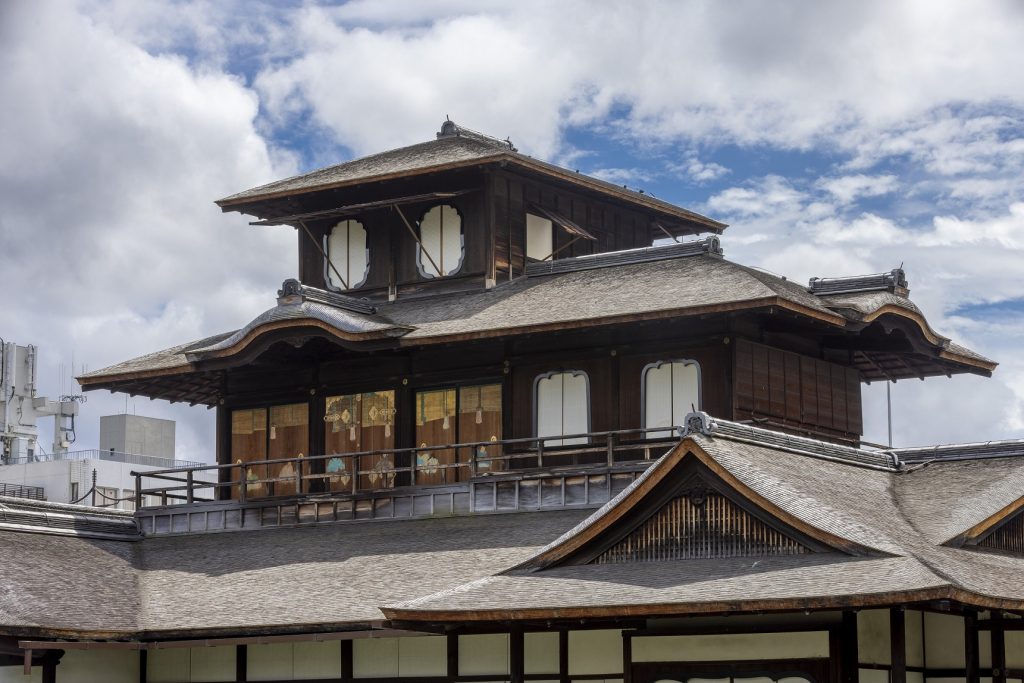
World Heritage Site
Due to its unique and outstanding architecture, Hiunkaku, part of the World Heritage site of Nishi Hongwan-ji, is considered one of the three great pavilions of Kyoto, the other two being Kinkaku-ji (the Golden Pavillion) and Ginkaku-ji (the Silver Pavillion). The name “Hiunkaku,” which means “the flying cloud pavilion,” derives from the pavilion’s appearance—its thin columns and abundance of white shoji paper doors, in addition to its overall shape, which, unlike Kinkaku-ji and Ginkaku-ji, is asymmetrical – making it look like a floating cloud.
| Dates | January 9th (Fri) – March 18th (Wed), 2026 *Closed to the public on January 31th (Sat), February 2nd (Mon), 5th (Thu), 7th (Sat), 10th (Tue), 15th (Sun), 16th (Mon), 19th (Thu), 22th (Sun), 23th (Mon), 27th (Fri), March 3rd (Tue) – 7th (Sat) and 10th (Tue). |
| Hours | 10:00 – 16:30 (Admission until 16:00) |
| Admission Fee | Adults: ¥800 / Age 6-12: ¥400 |
| Access | ・From Kyoto Station, take City Bus No. 9, No. 28 or No. 75 and get off at Nishi Hongwanji-mae. ・From Kyoto Station’s Hachijo Gate, take the Keihan Bus No. 311 or No. 312 and get off at Nishi Hongwanji-mae. |
12. Tō-ji Temple, Five-Story Pagoda
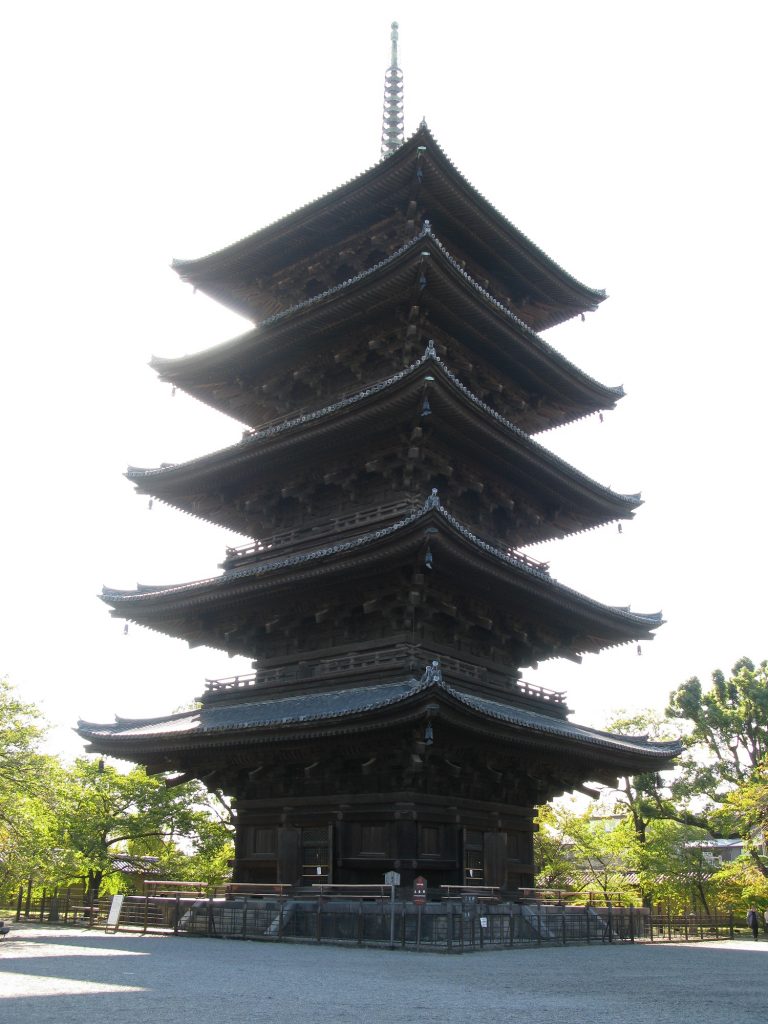
World Heritage Site
Tō-ji’s five-story pagoda is the tallest wooden tower in Japan, rising approximately fifty-five meters above the ground. During the Kyoto Winter Special Openings, visitors can enter the first story of this pagoda, which is normally closed to the public.
Inside is a pillar extending all the way up to the fifth story, surrounded on four sides by Buddhist statues.
| Dates | January 9th (Fri) – March 18th (Wed), 2026 |
| Hours | 8:30 – 17:00 (Admission until 16:30) |
| Admission Fee | Adults ¥1,200 / Age 16-18: ¥700 / Age 6-15: ¥500 (fee includes general admission) |
| Access | • 15-minute walk from Kyoto Station. • From Kyoto Station, take City Bus No. 205 to Toji-michi. 5-minute walk from the bus stop. |
13. Daigo-ji Temple, Sanbō-in Temple
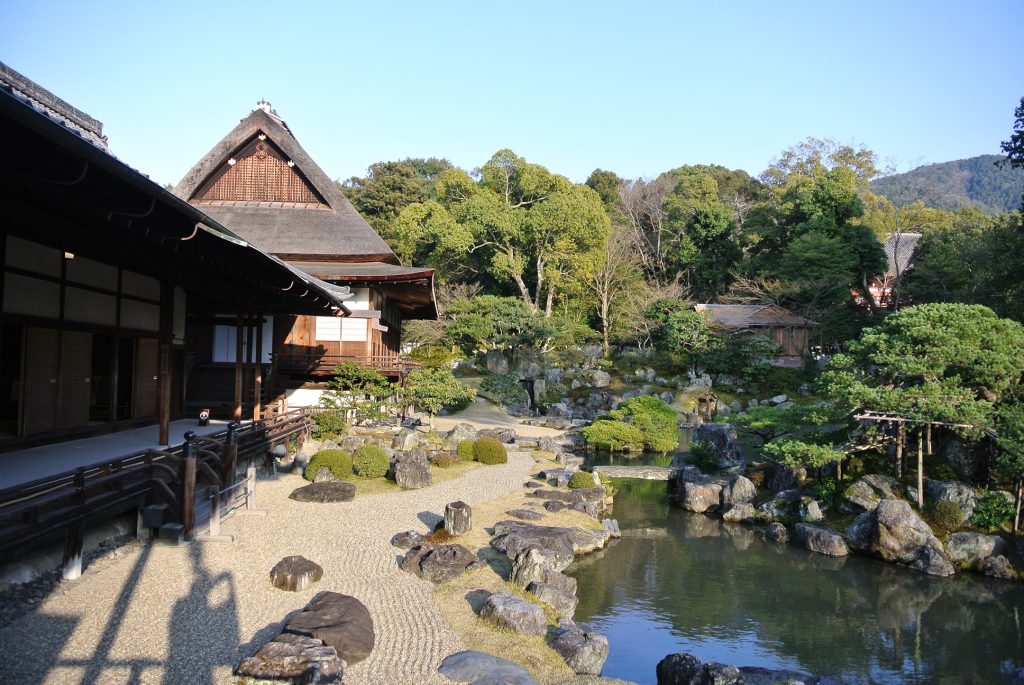
World Heritage Site
The National Treasure Omoteshoin building and its garden were designed for the famous cherry blossom viewing gatherings that were held by Toyotomi Hideyoshi (1537-1598), and the structure is recognized as a fine specimen of lavish Momoyama period (late sixteenth century) architecture.
During the Kyoto Winter Special Openings, the Miroku-Bosatsu (Maitreya Bodhisattva) (Important Cultural Property), a Buddhist statue with a beautiful face created by the famous Buddhist sculptor Kaikei, who was active in the twelfth century, as well as the Chinryu-tei tea room will be made open to public.
You can also view the famous golden tenmoku tea bowl, which was gifted by Hideyoshi.
| Dates | January 9th (Fri) – March 18th (Wed), 2026 |
| Hours | 9:00 – 16:30 (Admission until 16:00) from January to February, 9:00 – 17:00 (Admission until 16:30) in March. |
| Admission Fee | Adults: ¥800 / Free for persons age 6-12 *General admission fee for Sanbo-in (Age 6 and above: ¥600) will be required in addition. |
| Access | • From JR Yamashina Station, take City Subway Tozai Line to Daigo Station, and exit from Exit No. 2. 10-minute walk from the station. • From Kyoto Station’s Hachijo Gate (in front of Hotel Keihan), take the Keihan Bus Kyoto Daigoji Line to Daigoji. |

